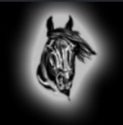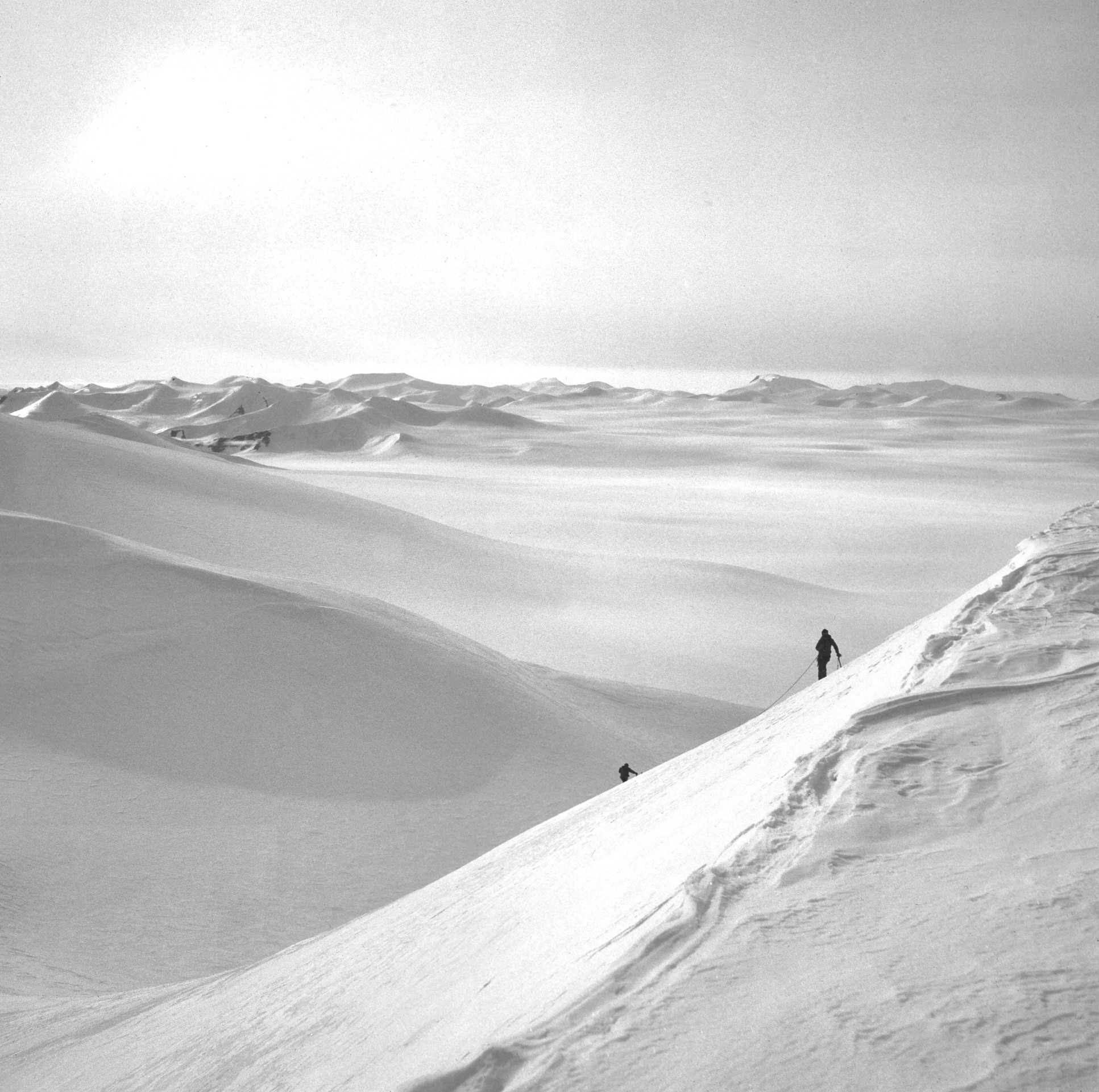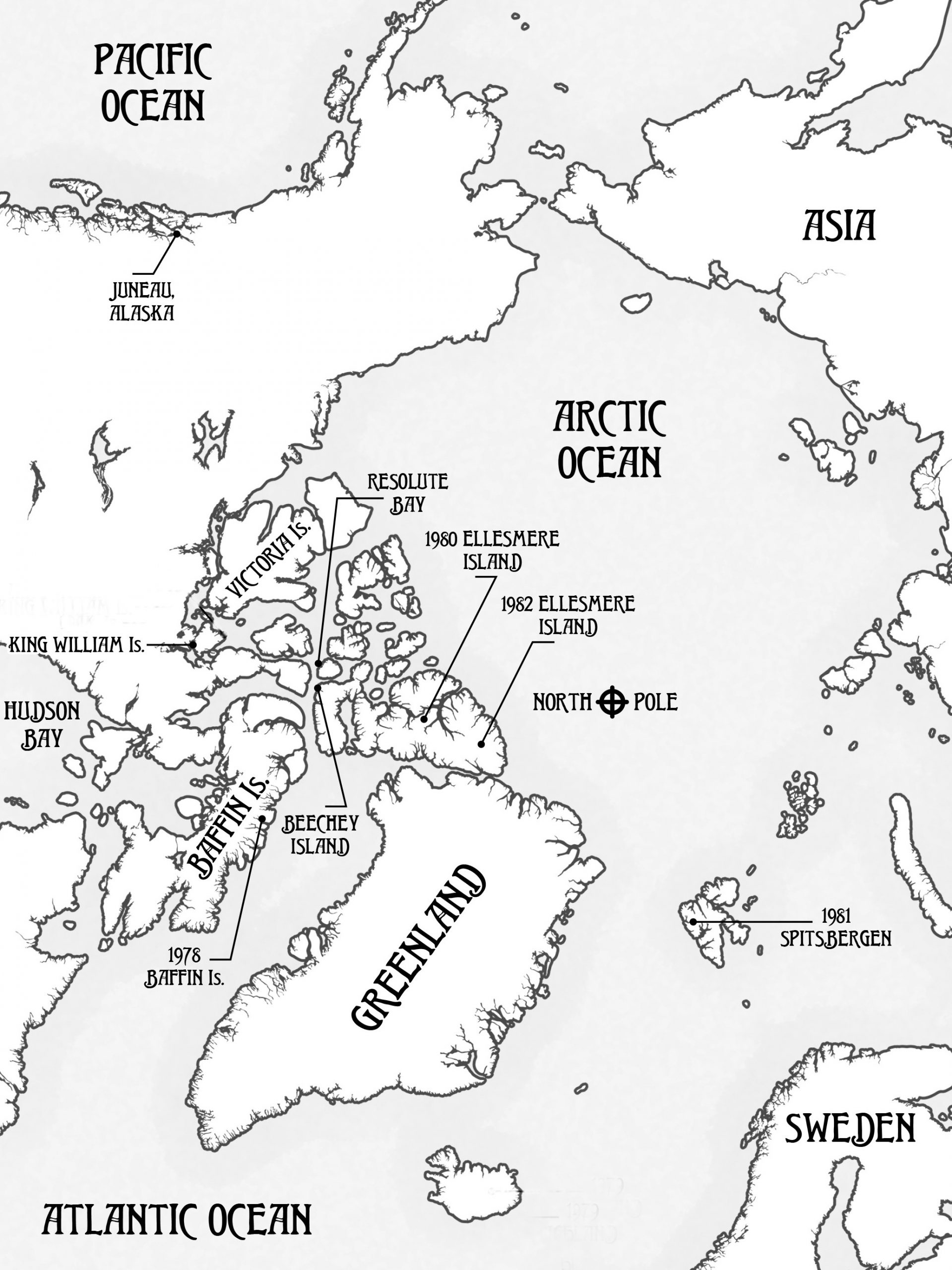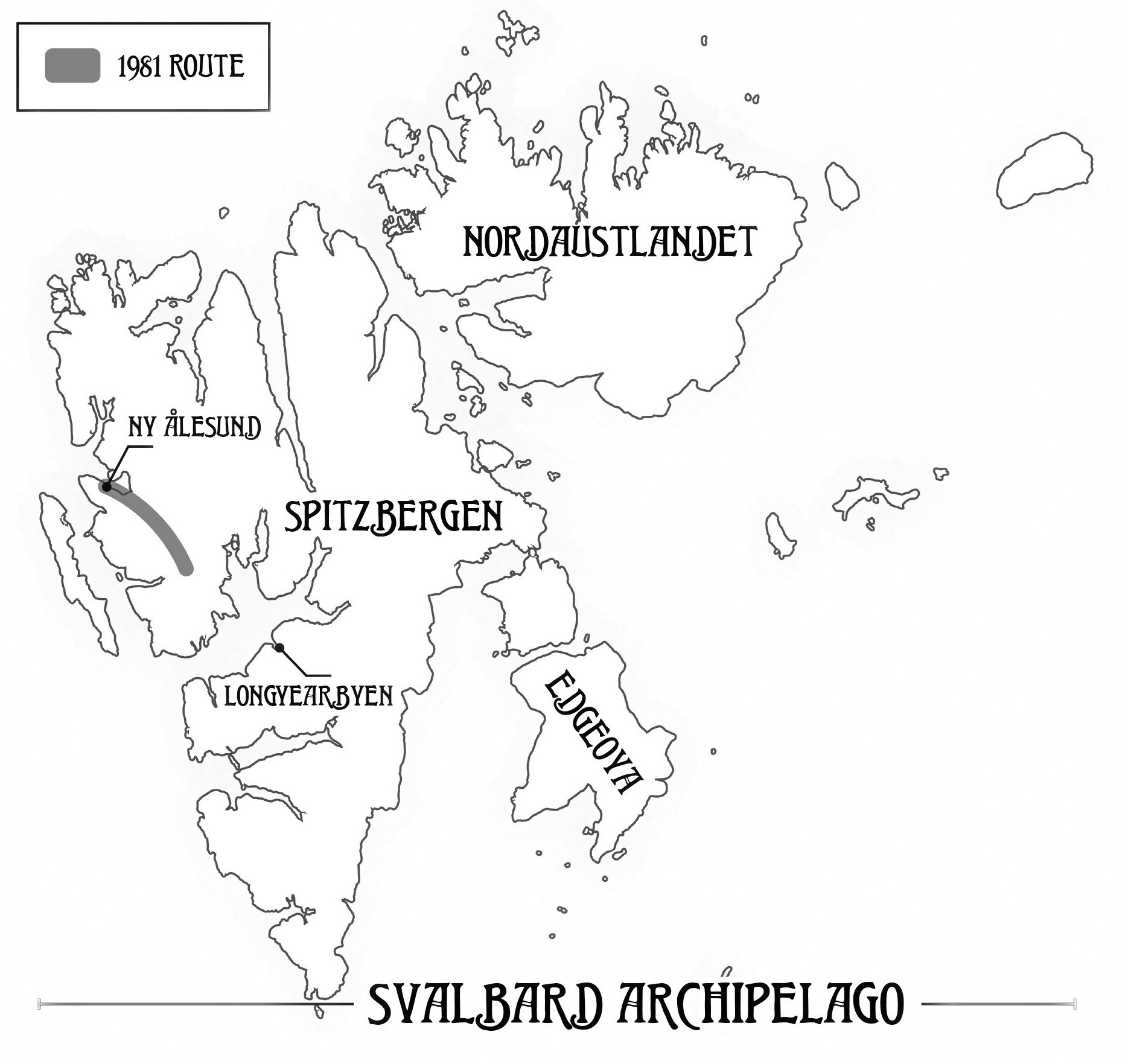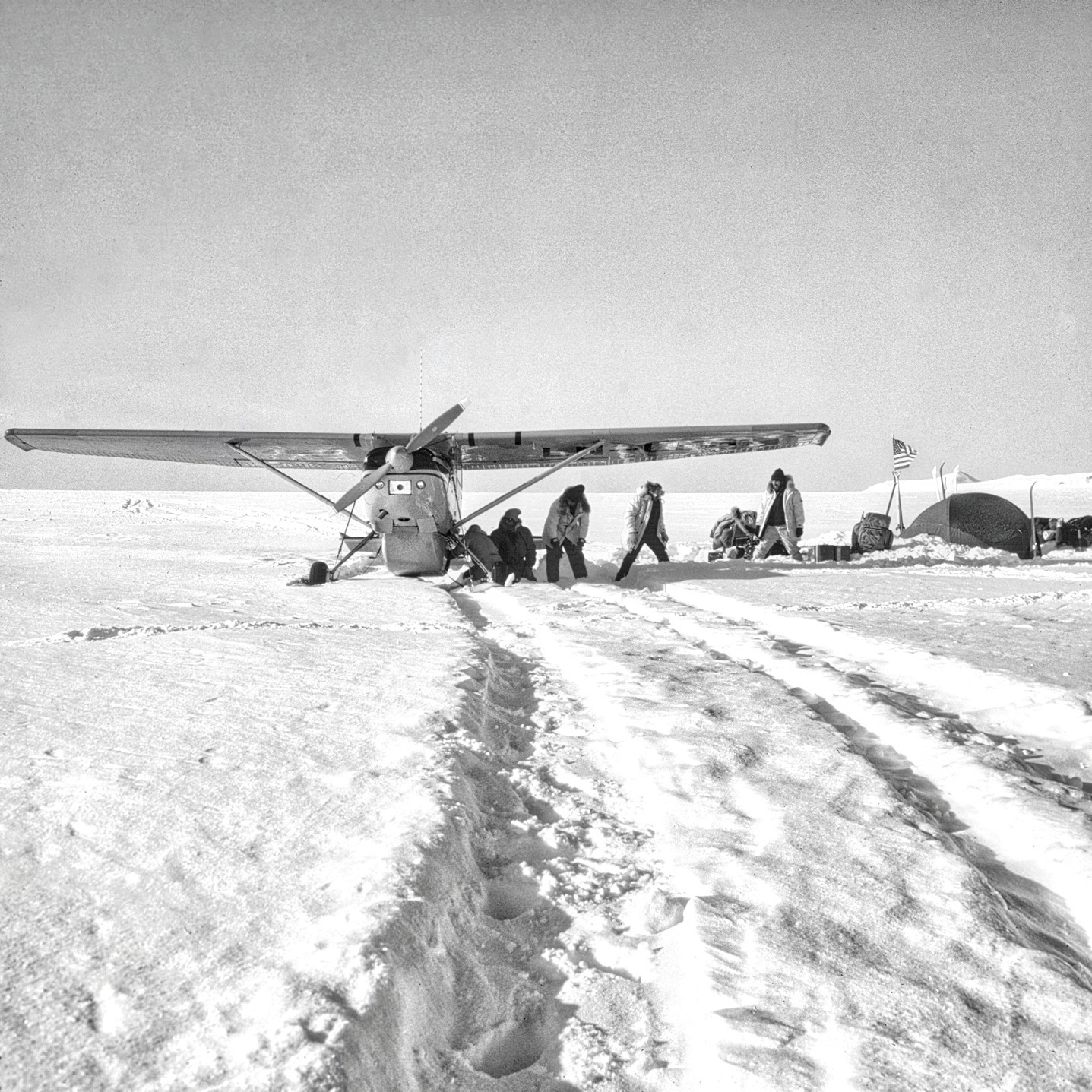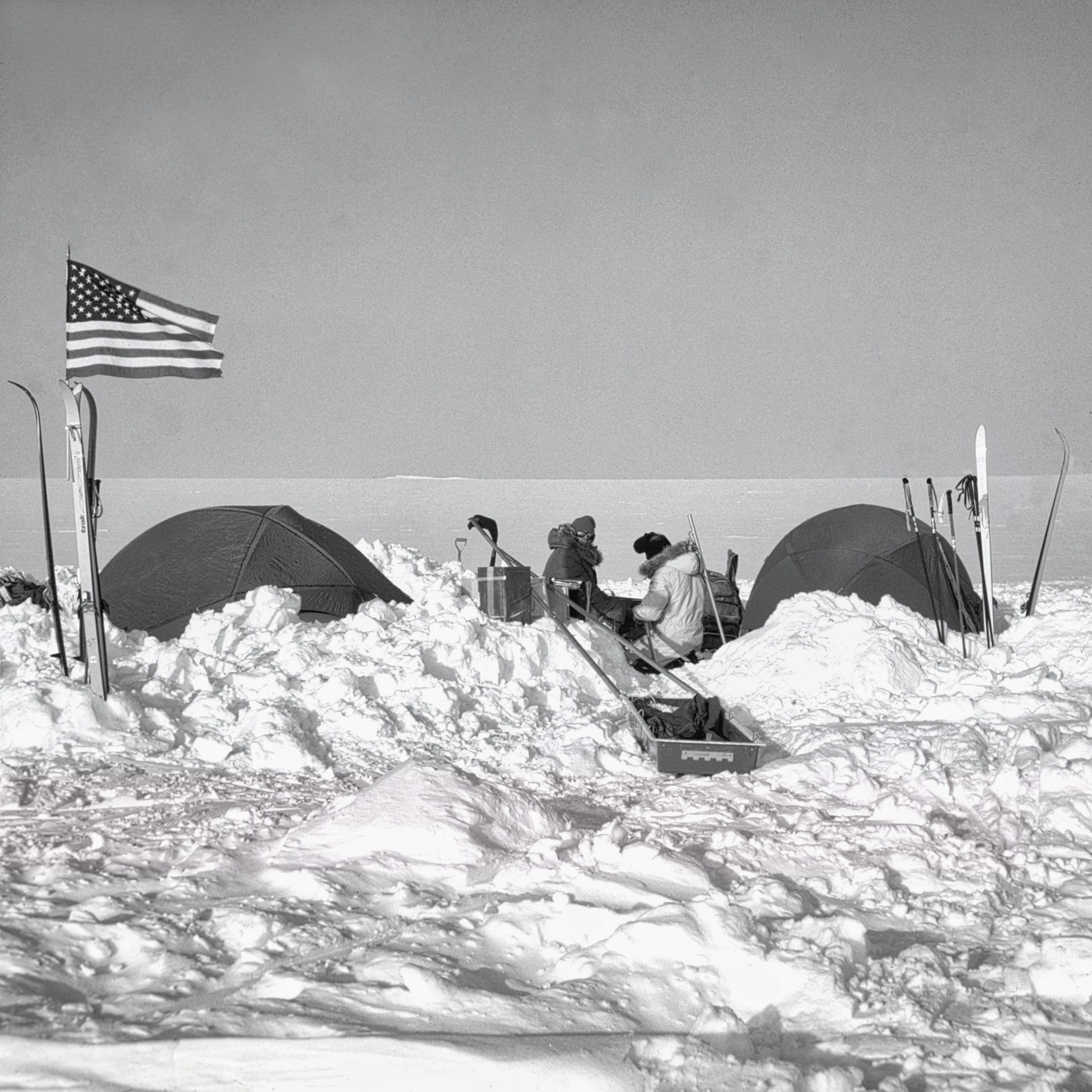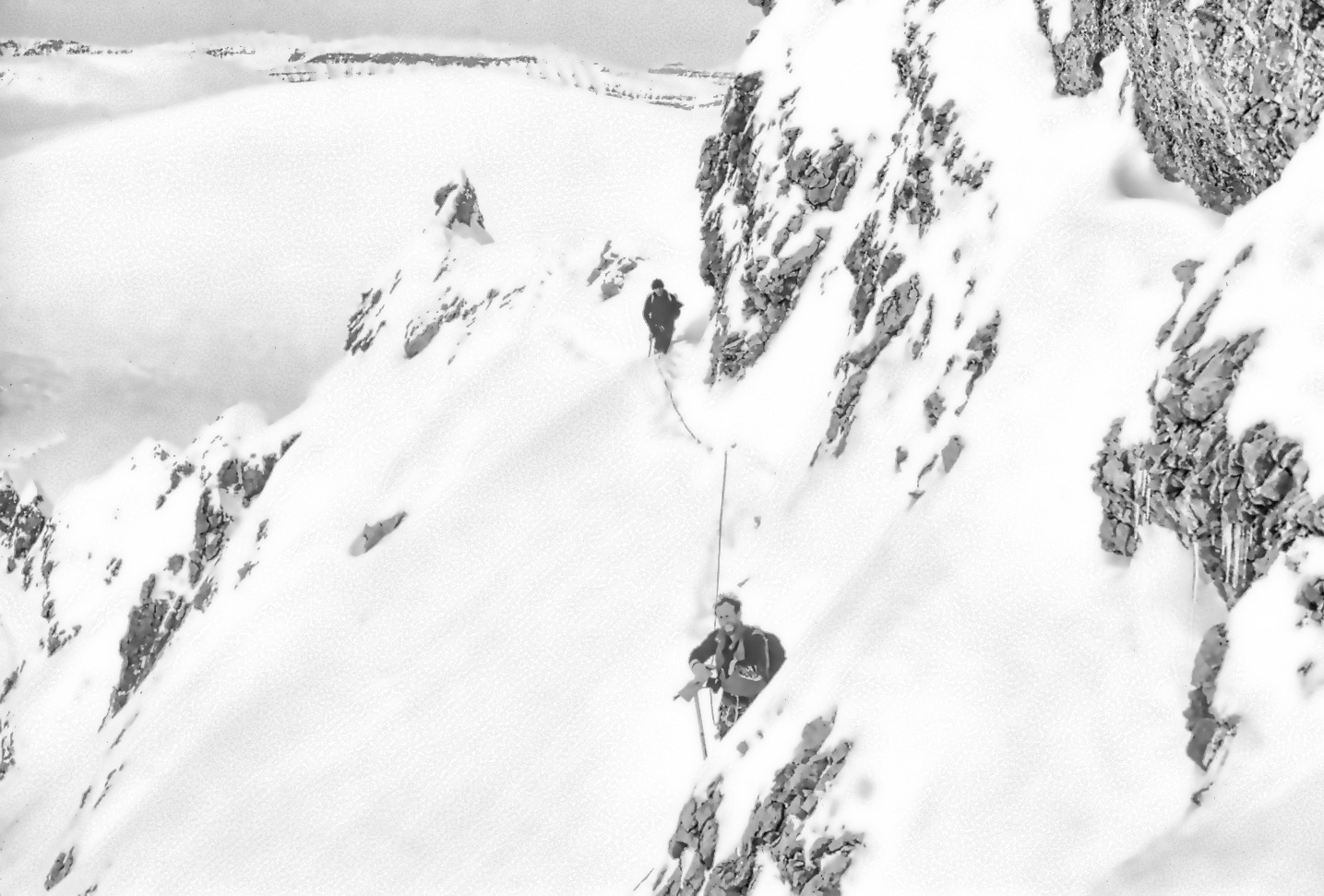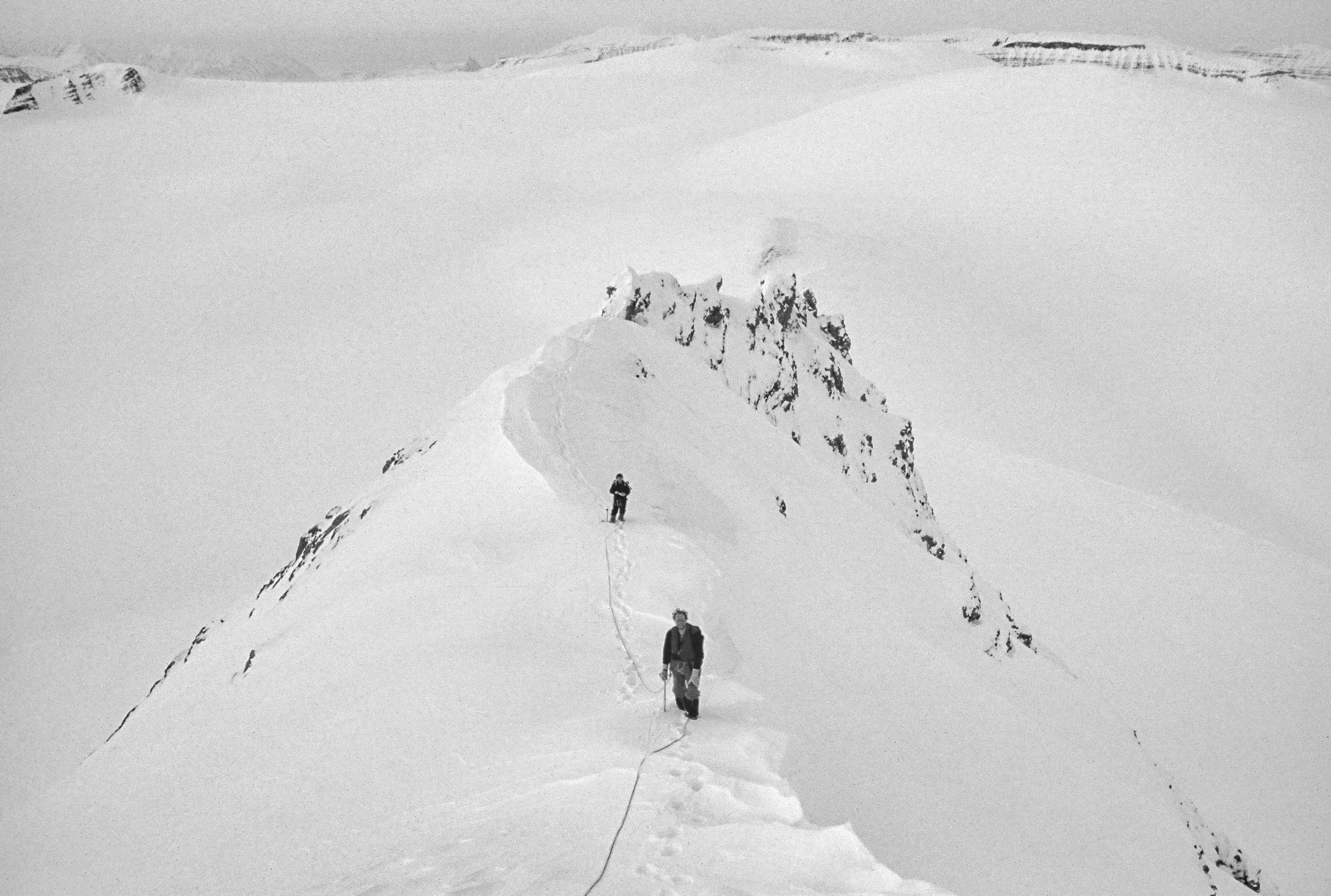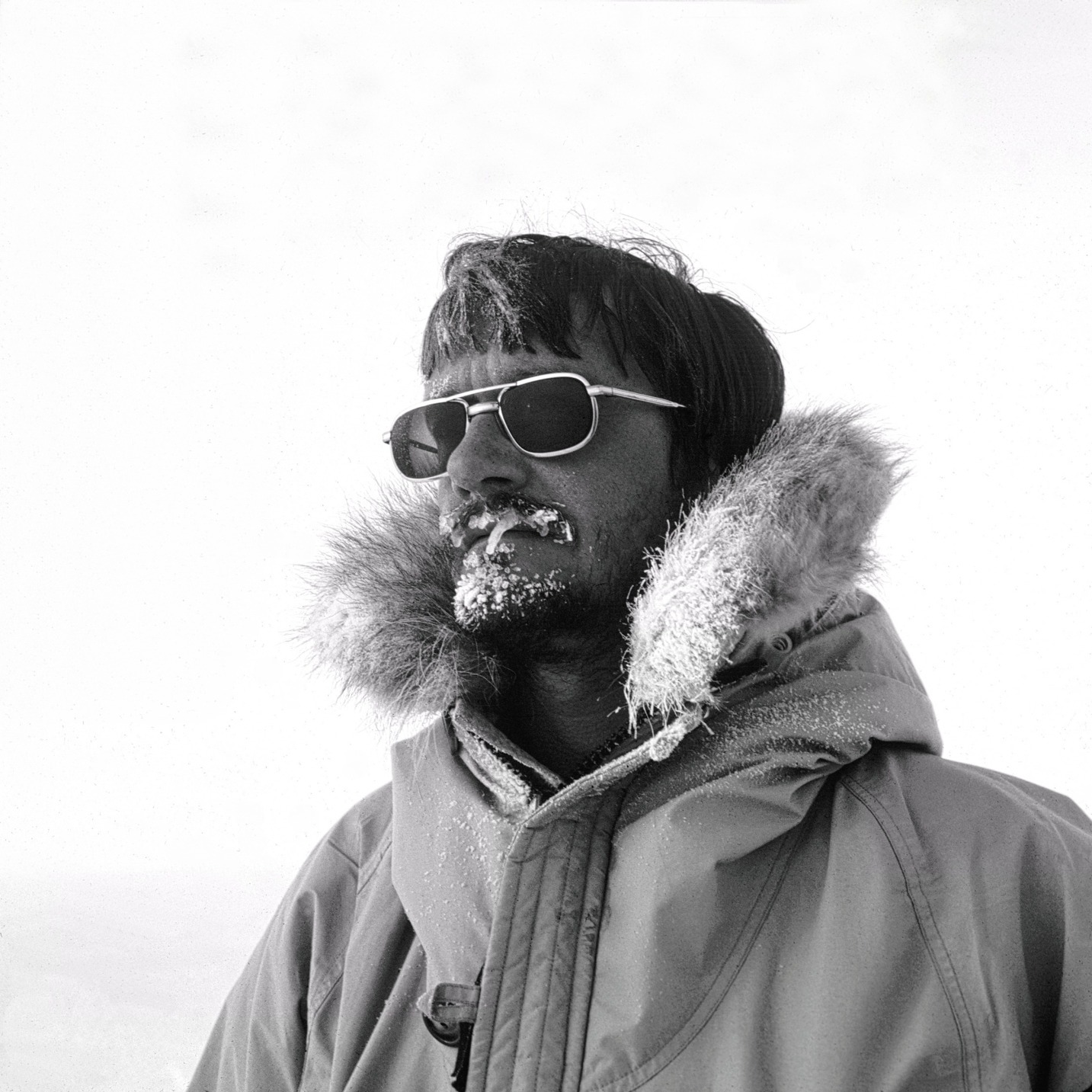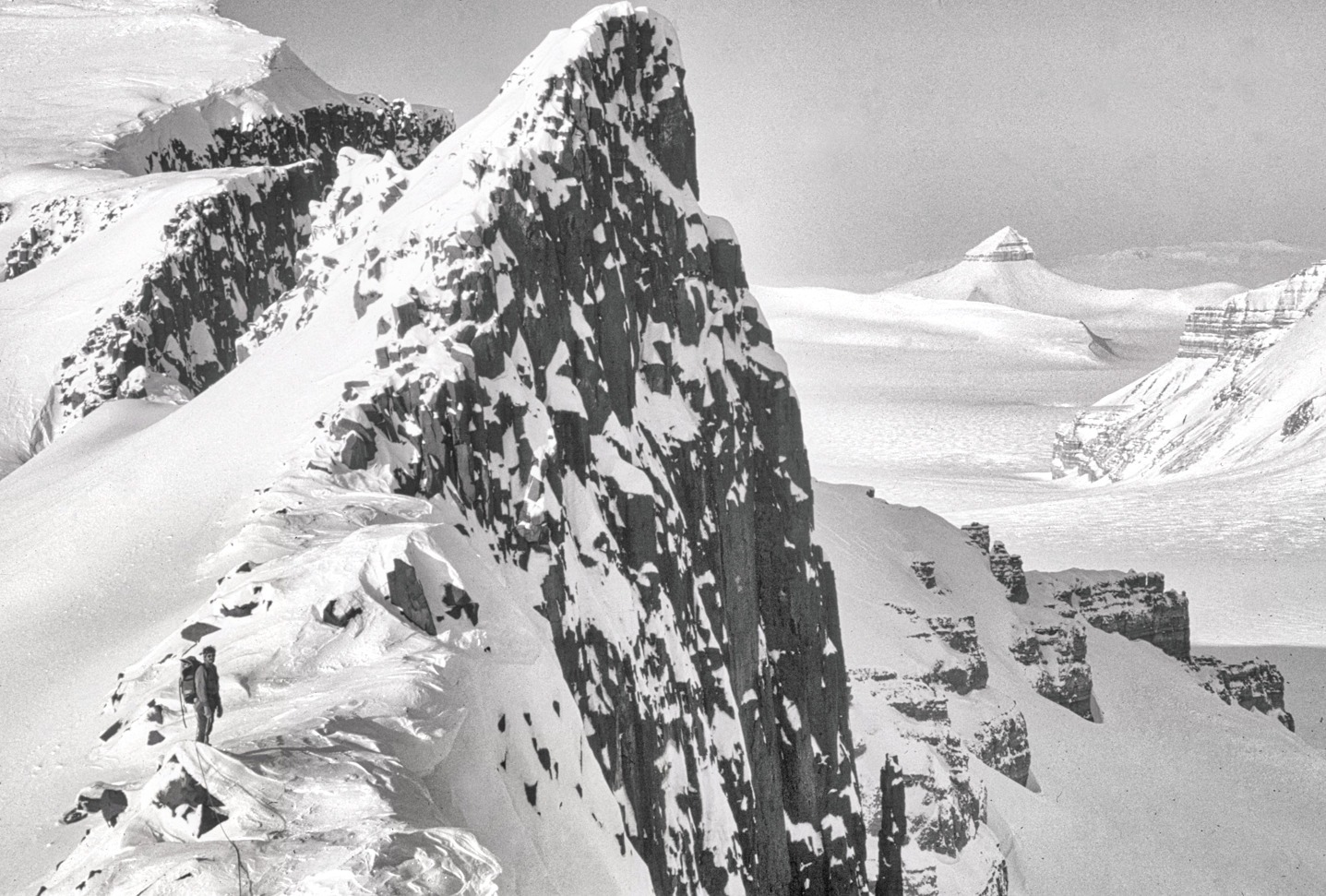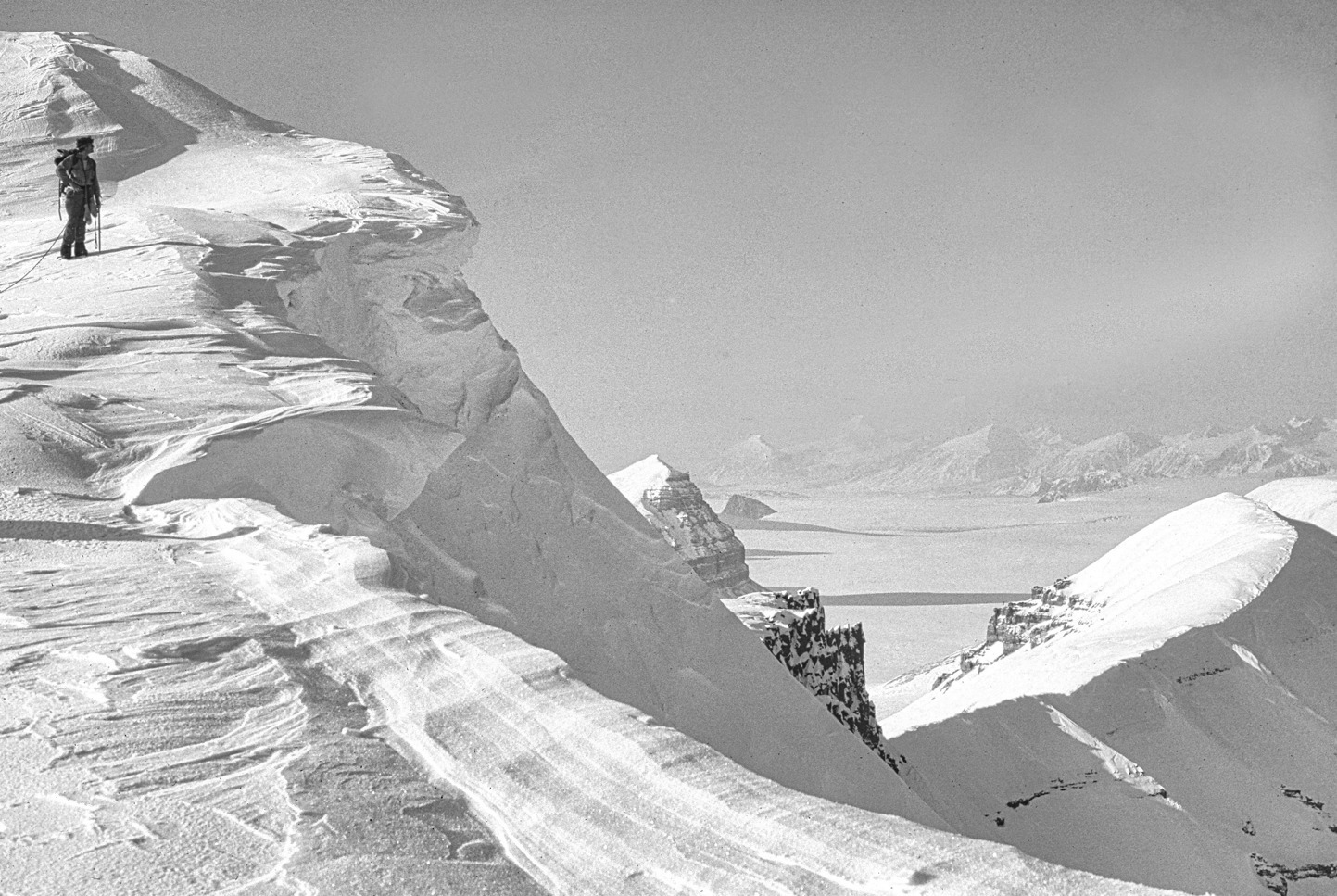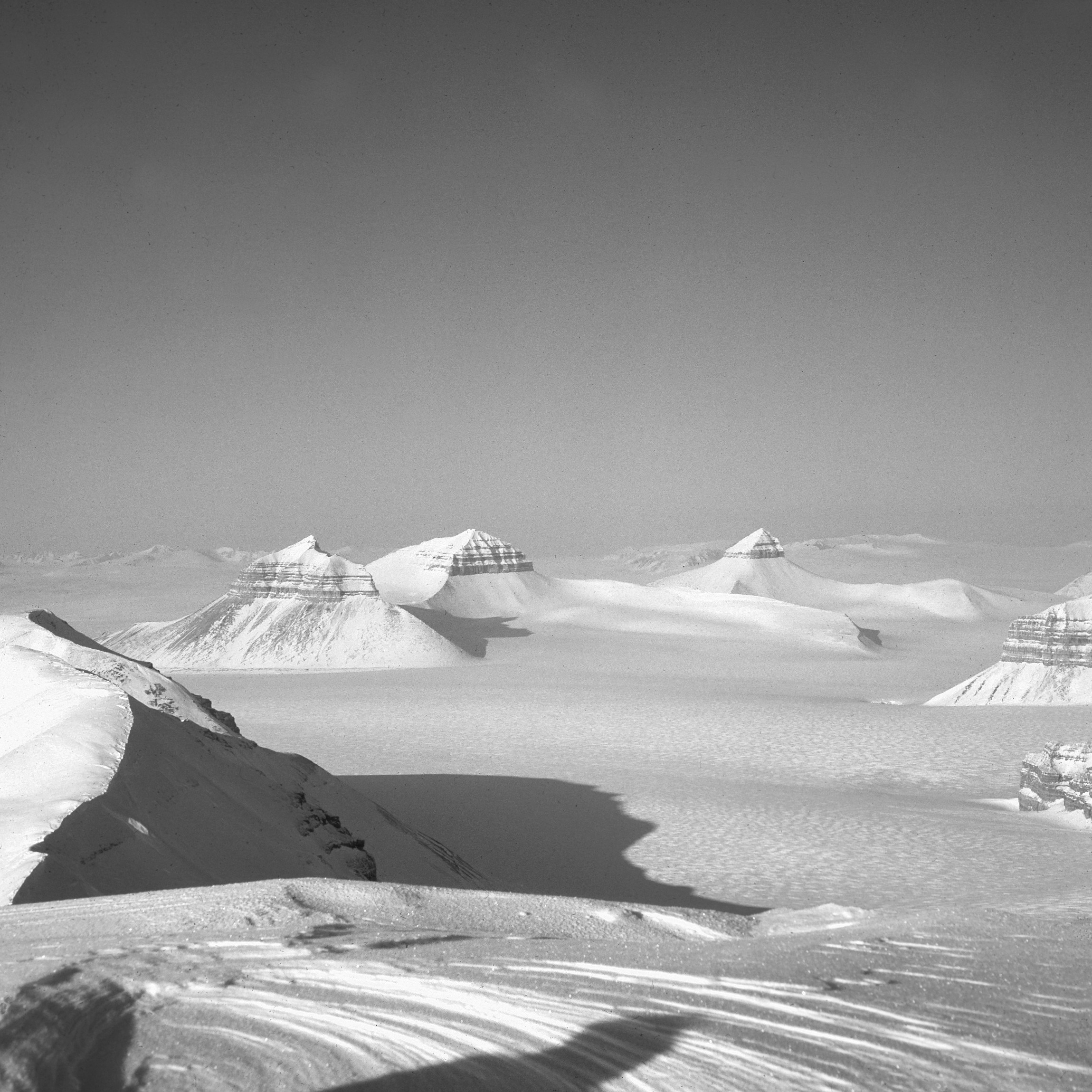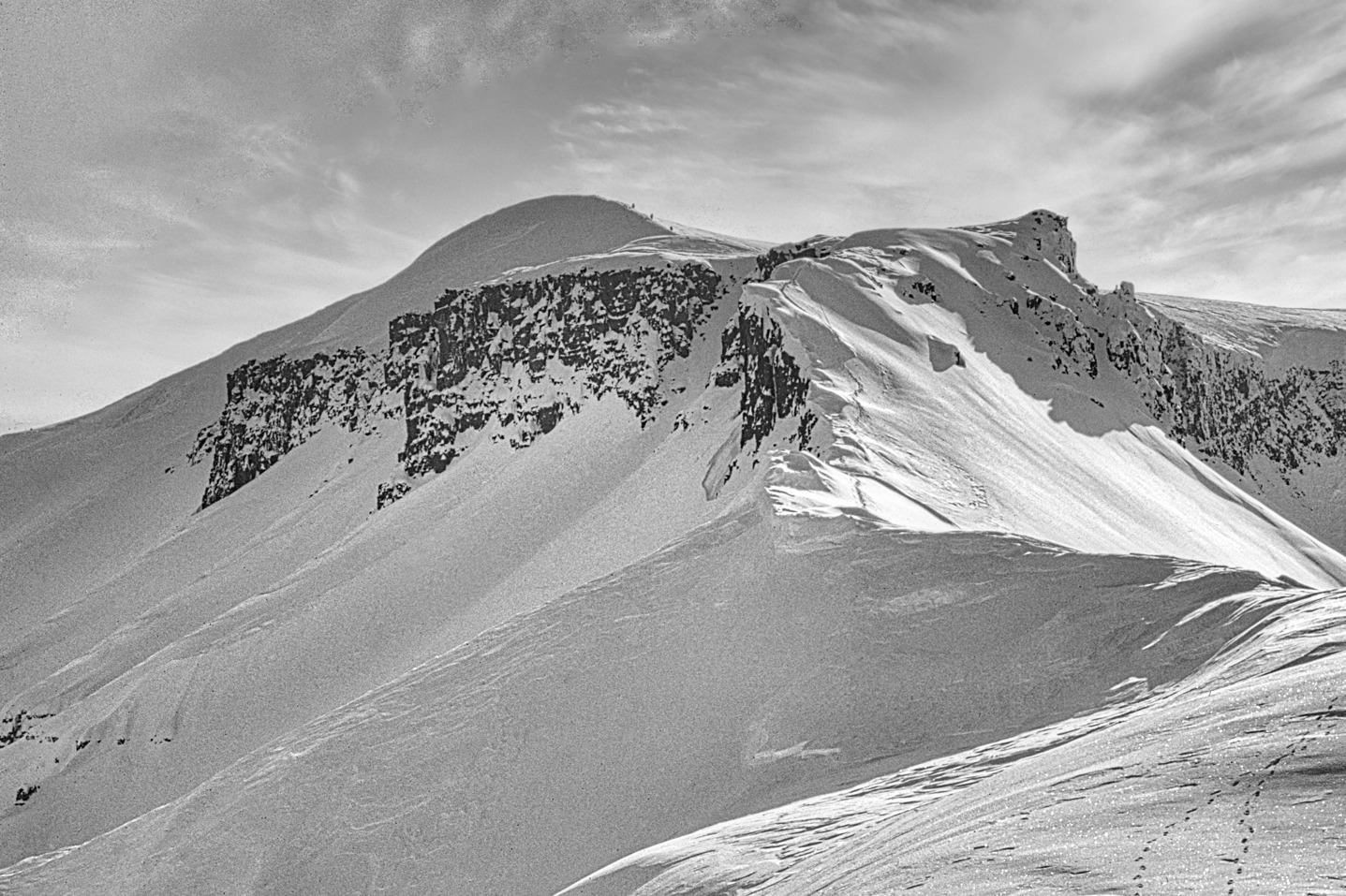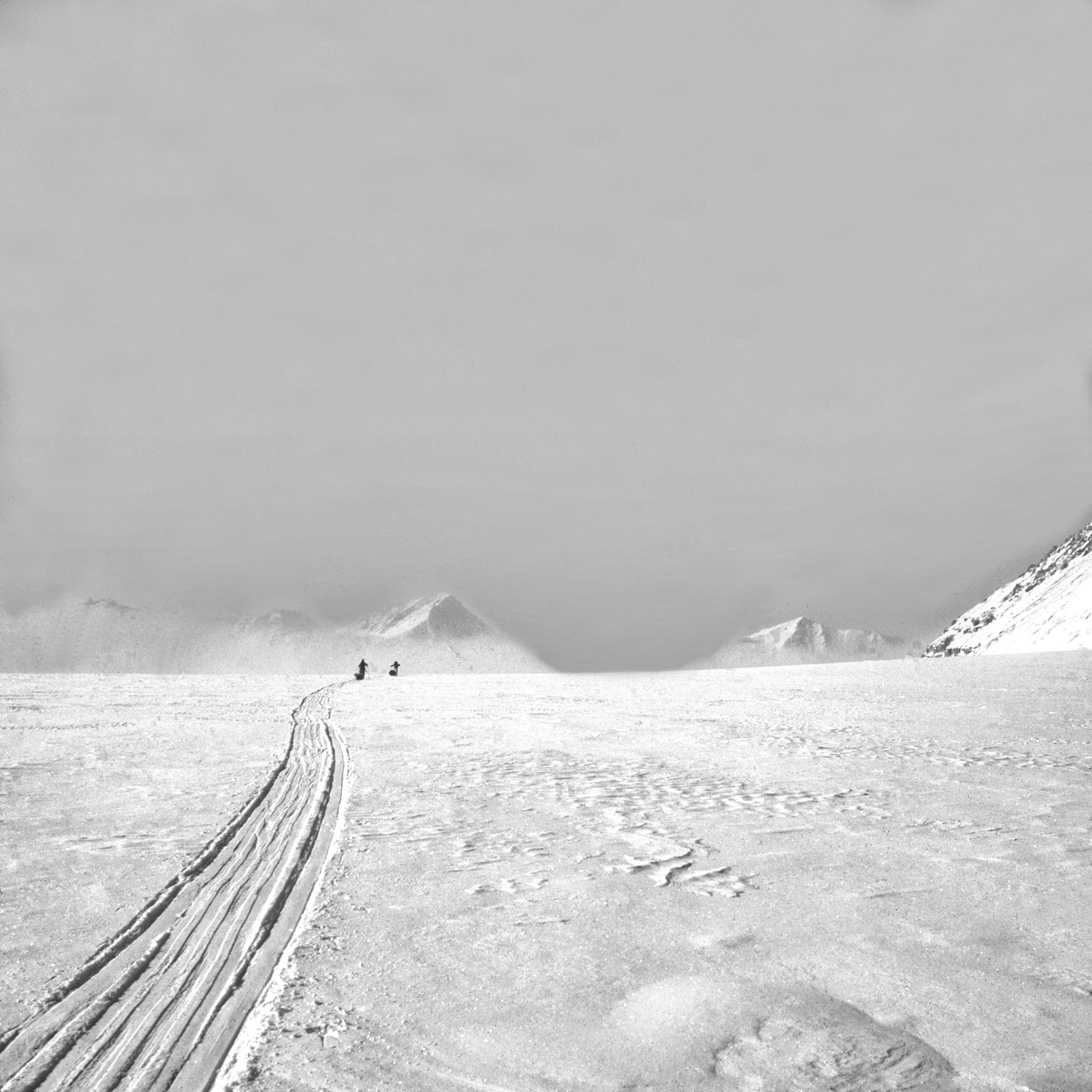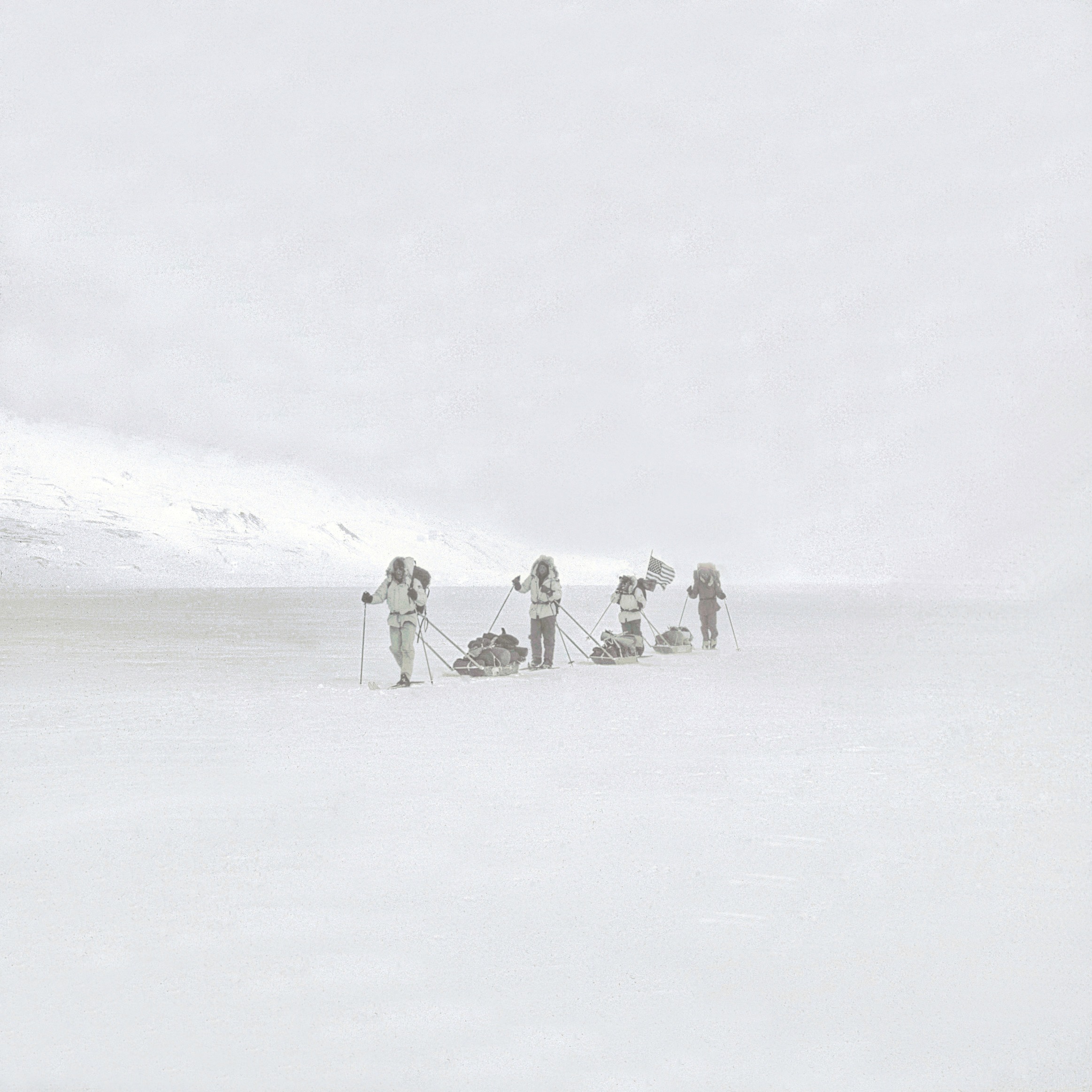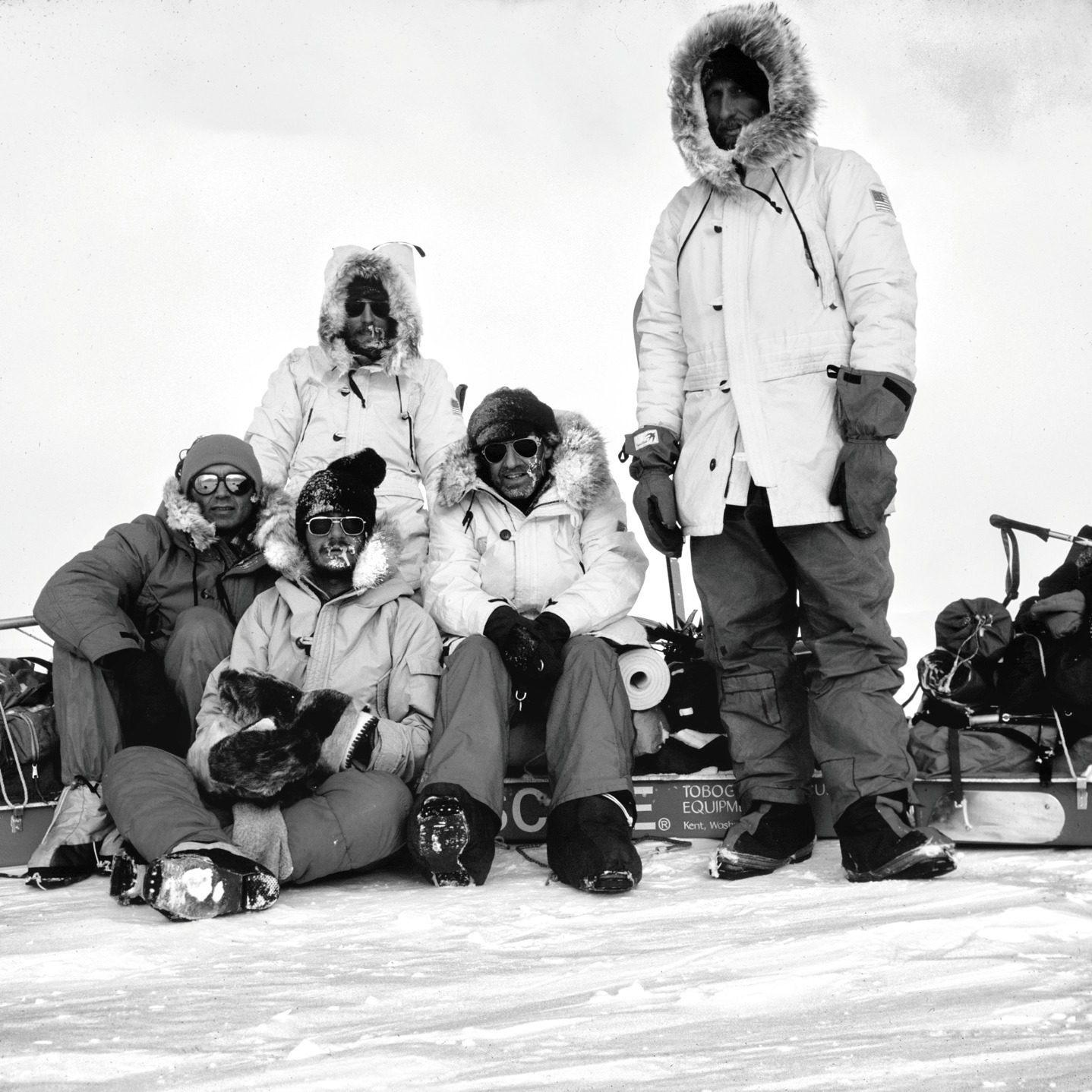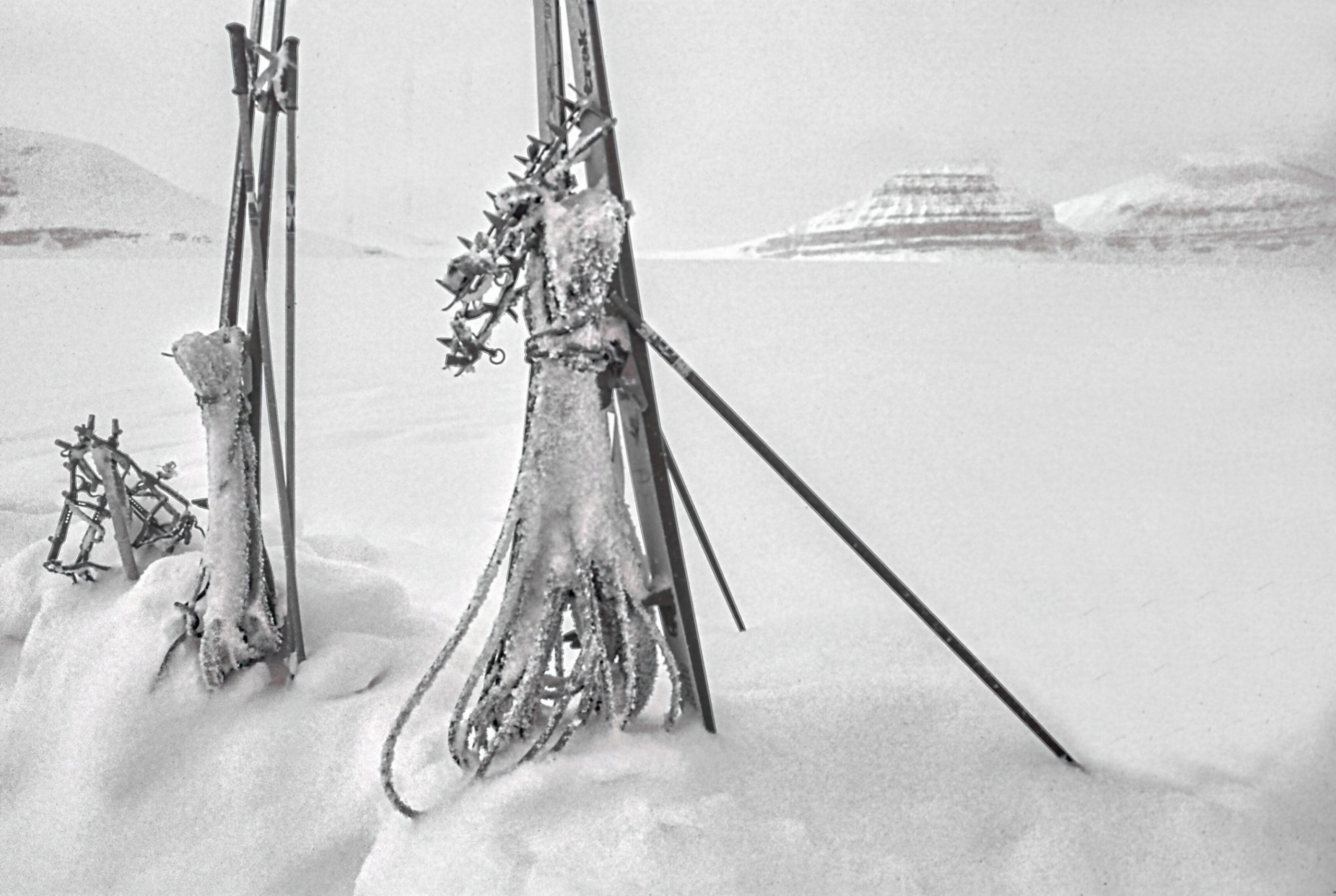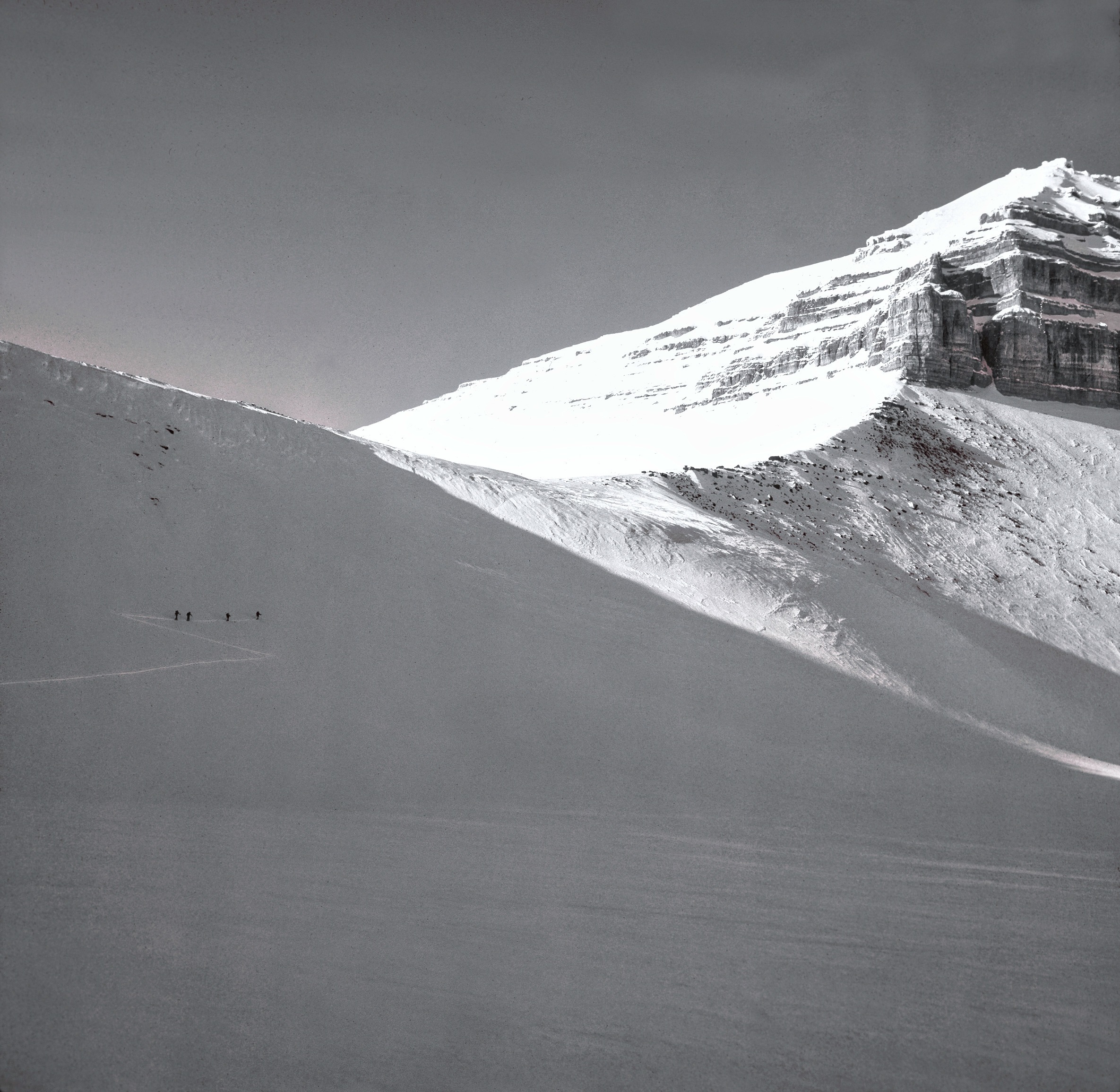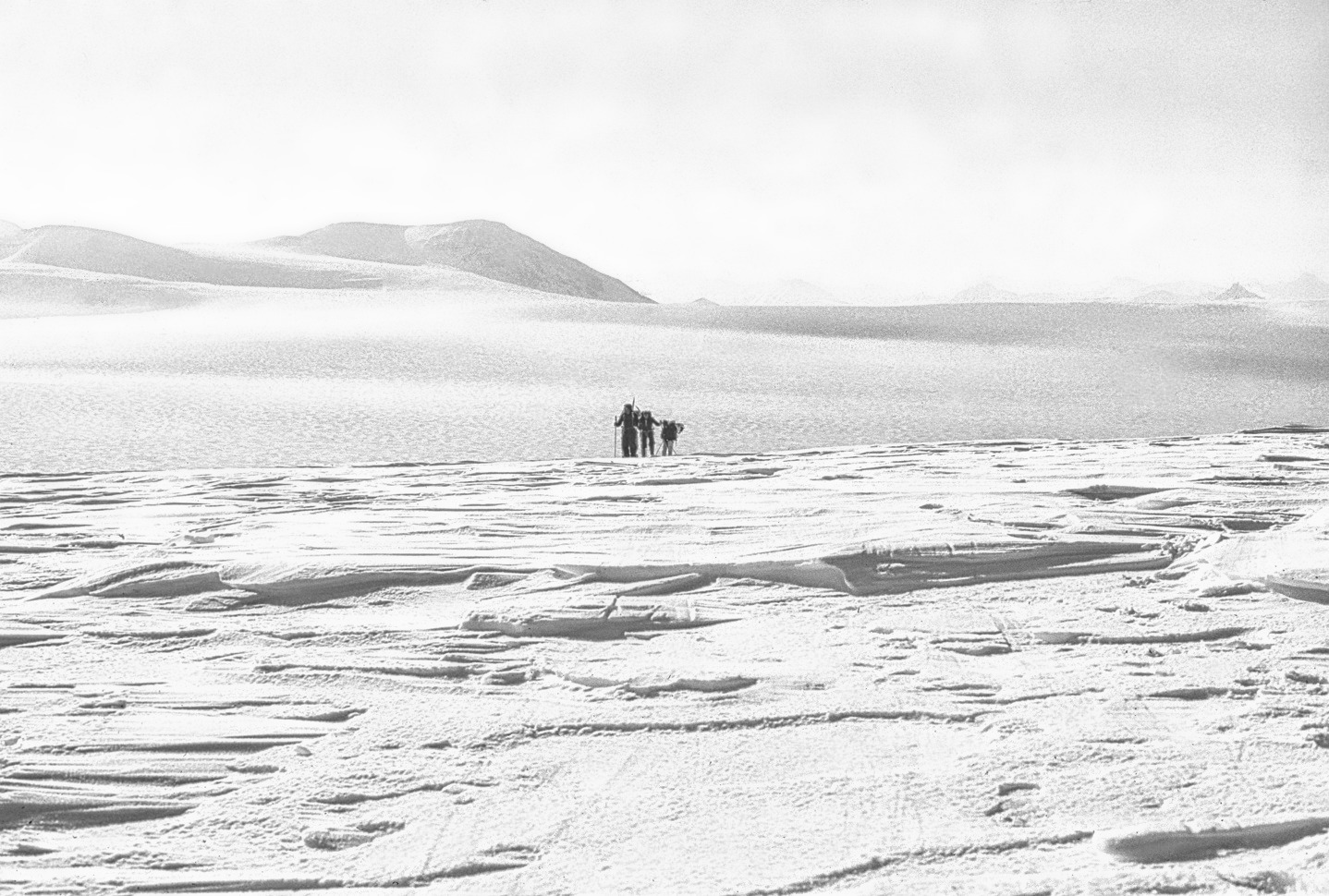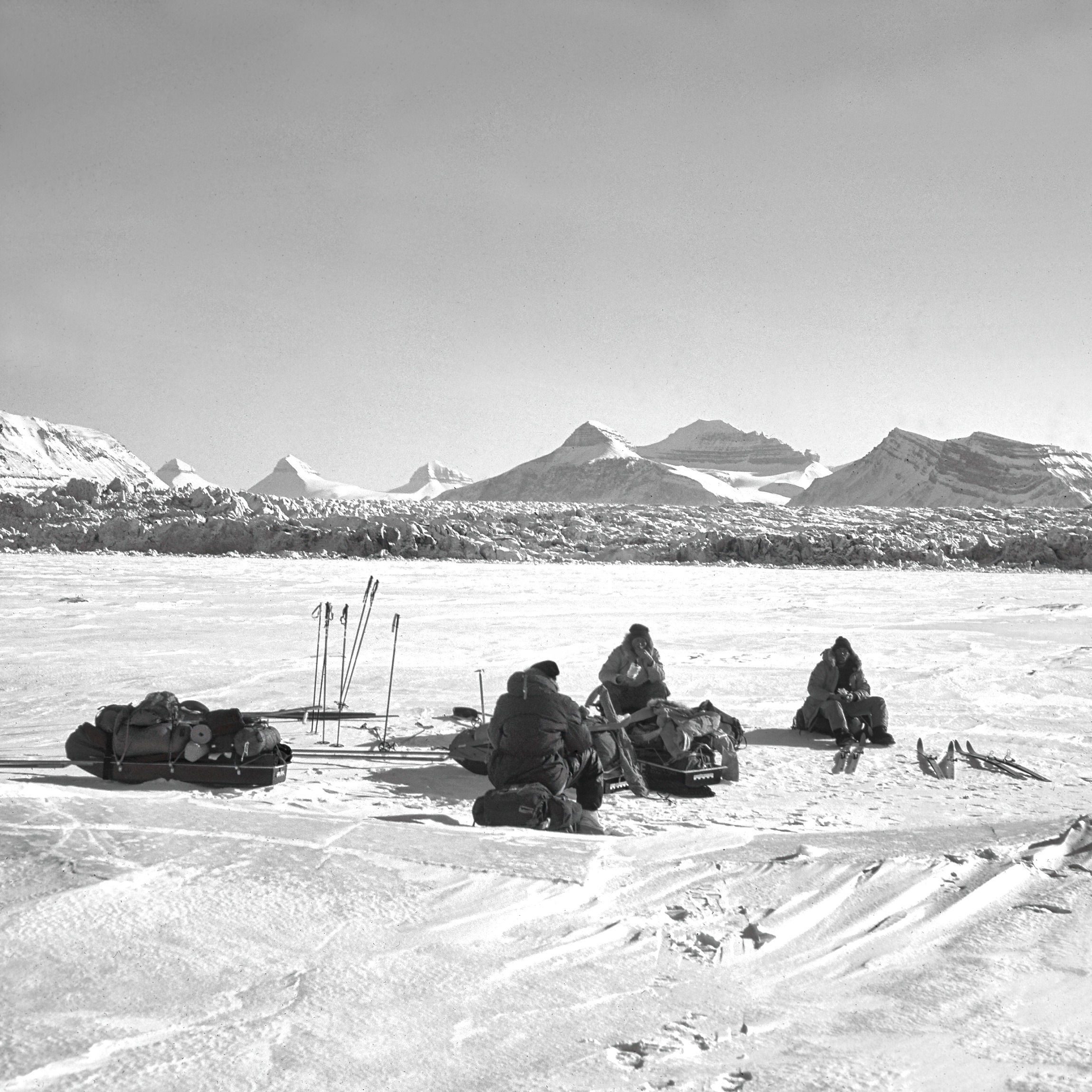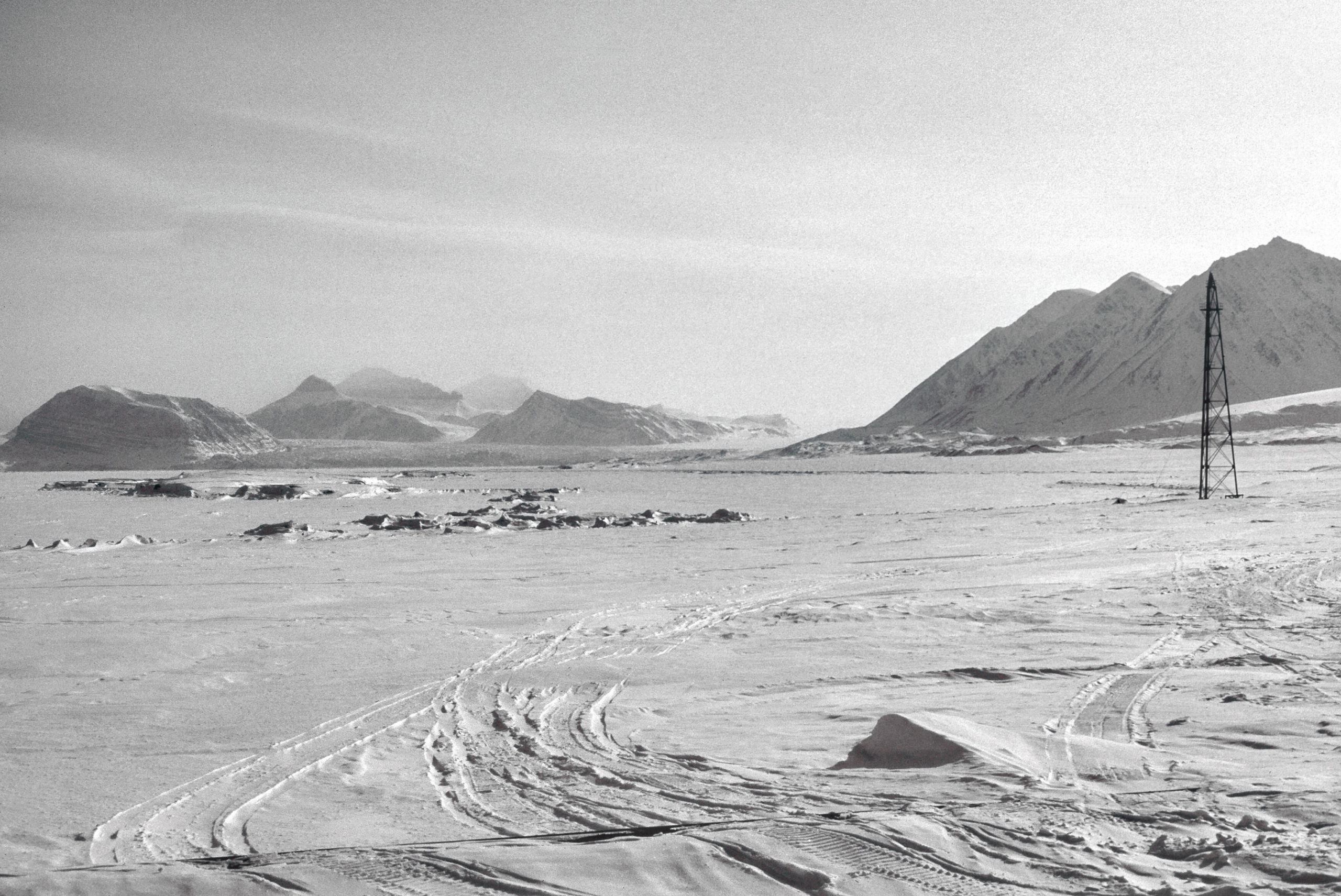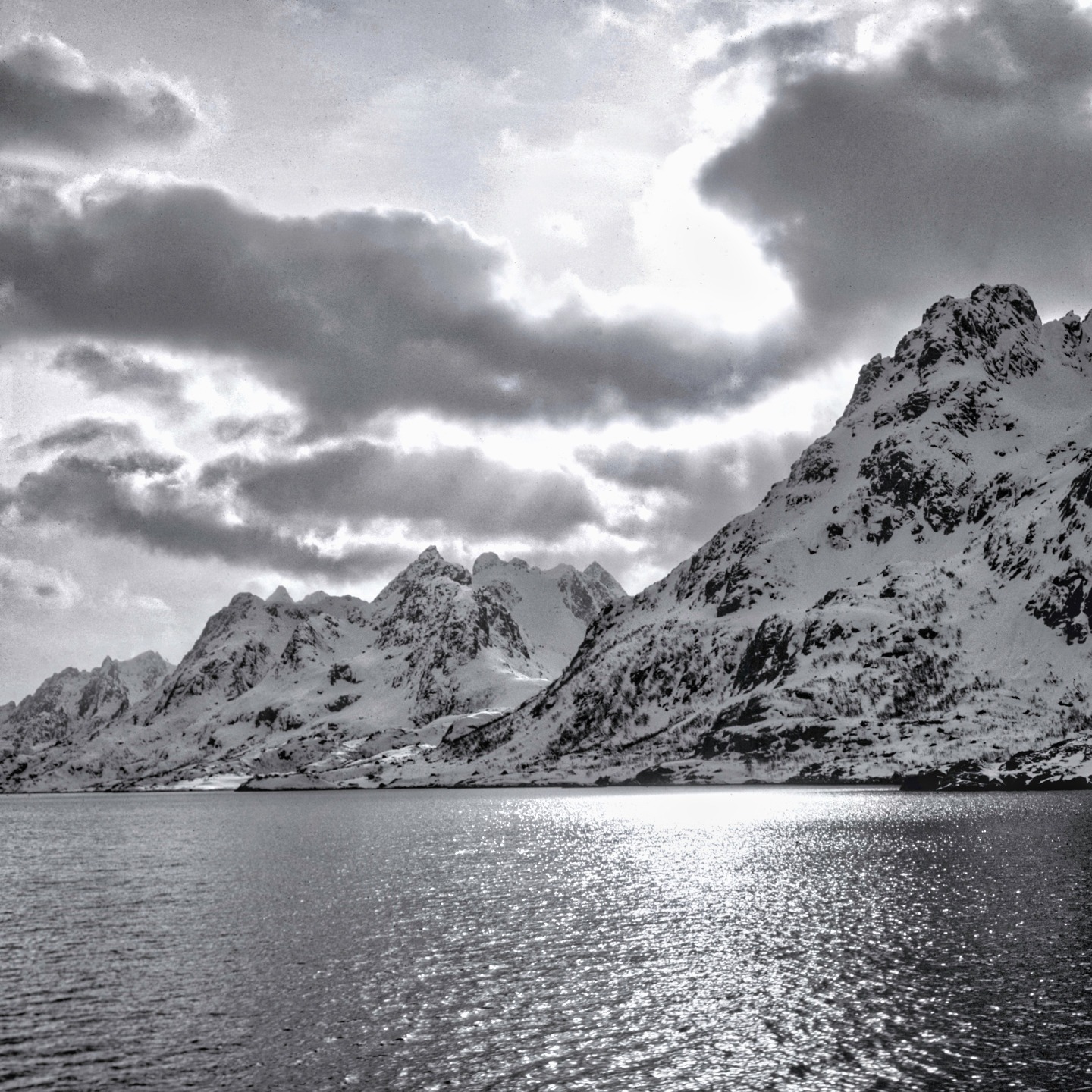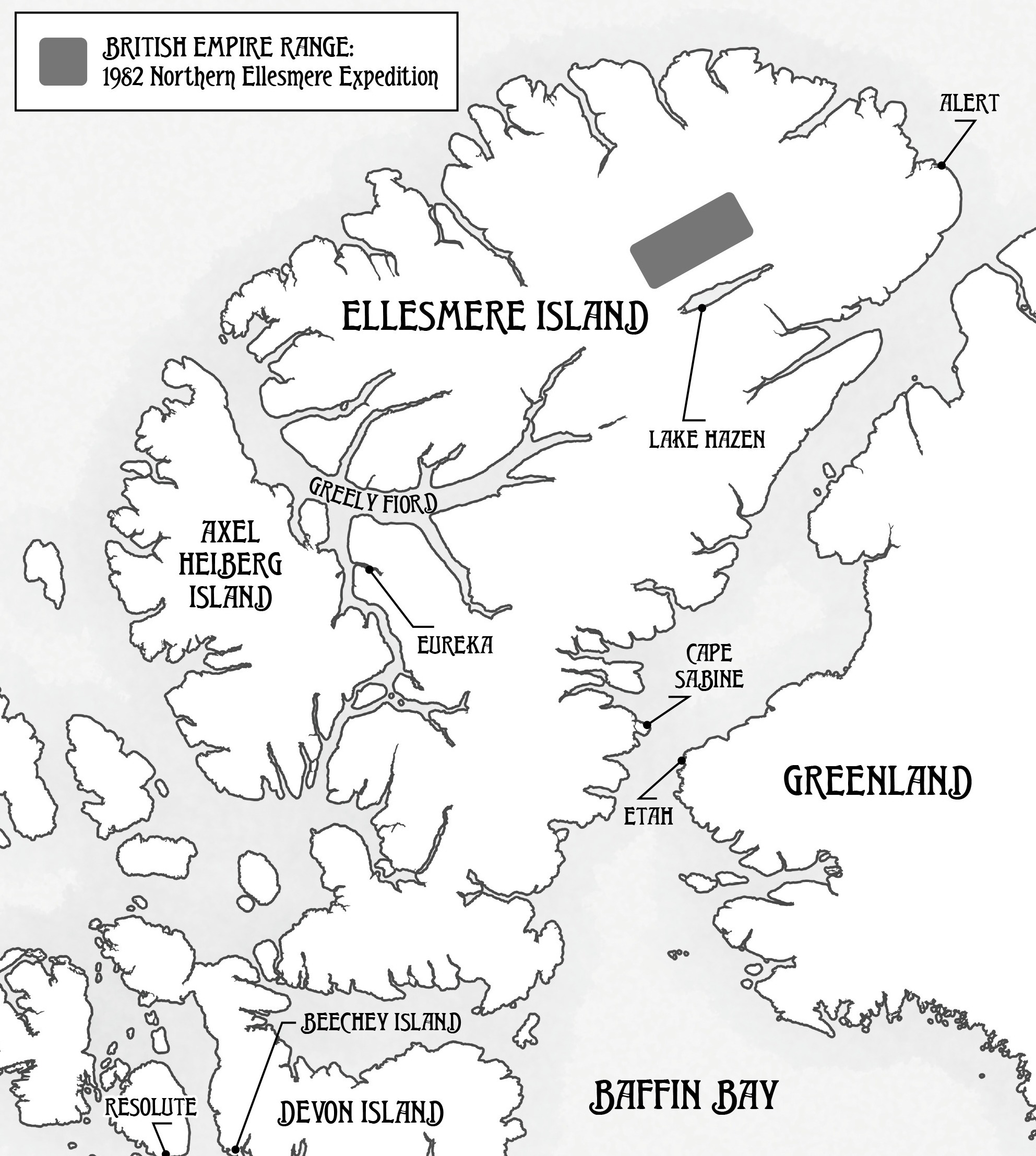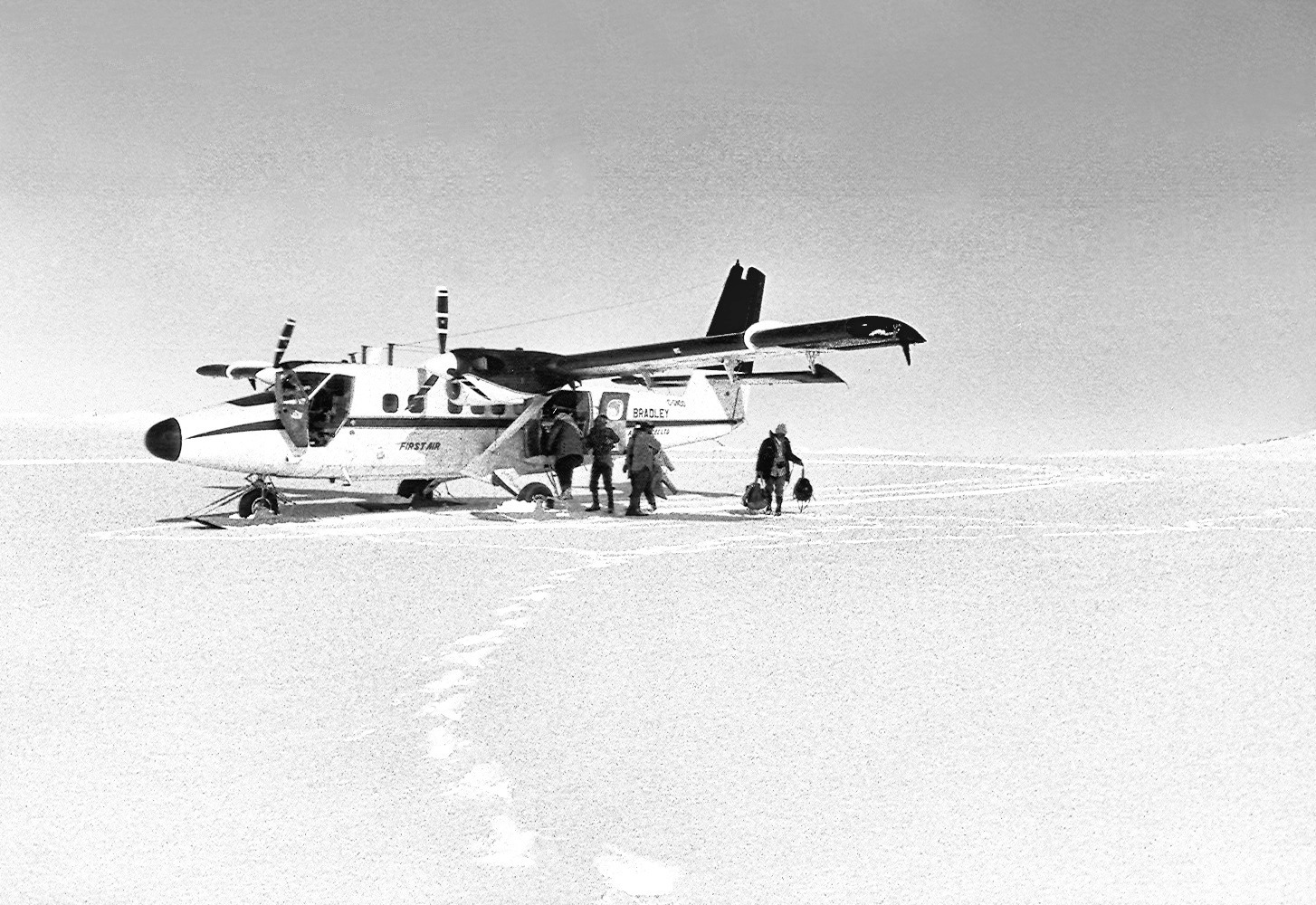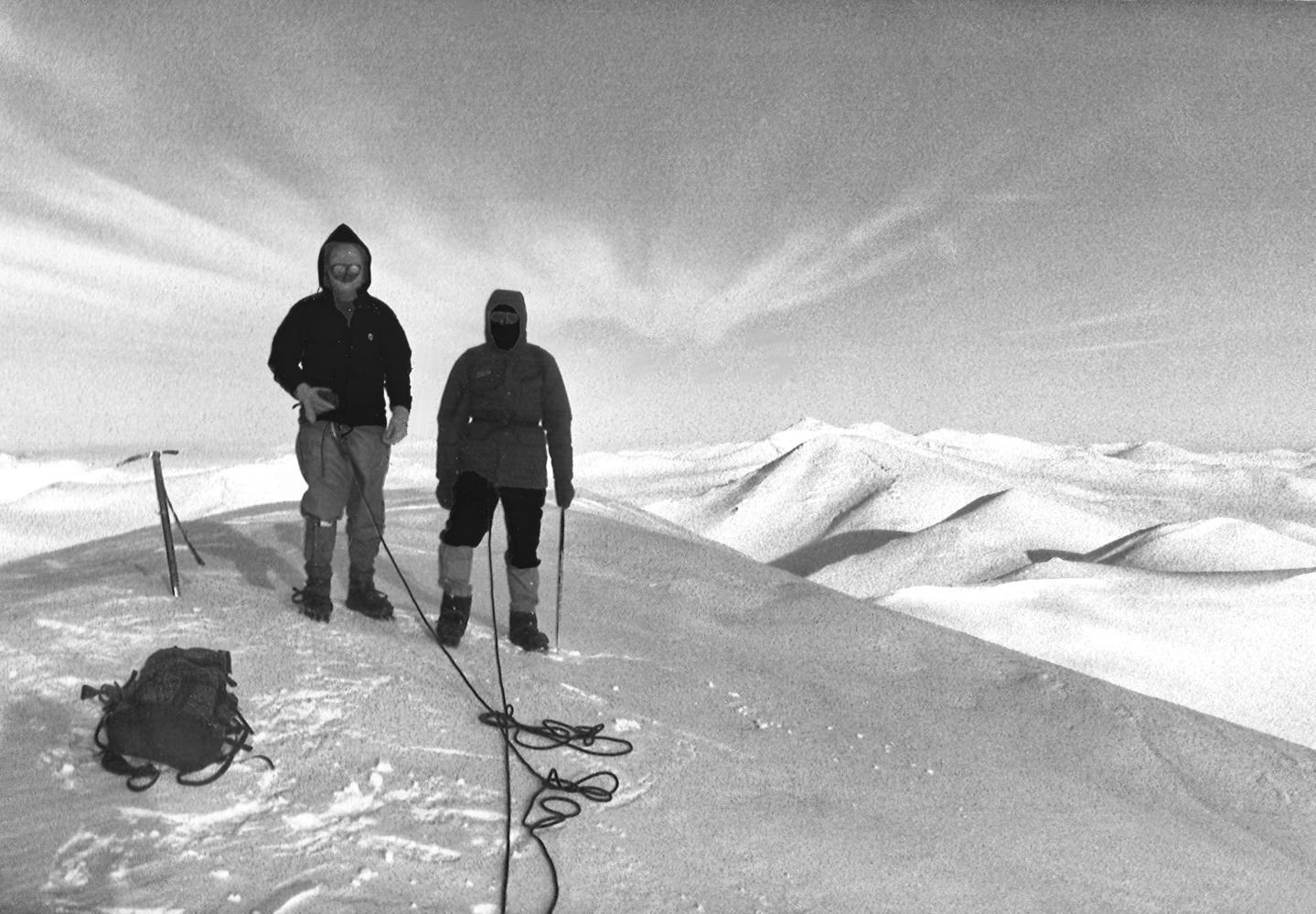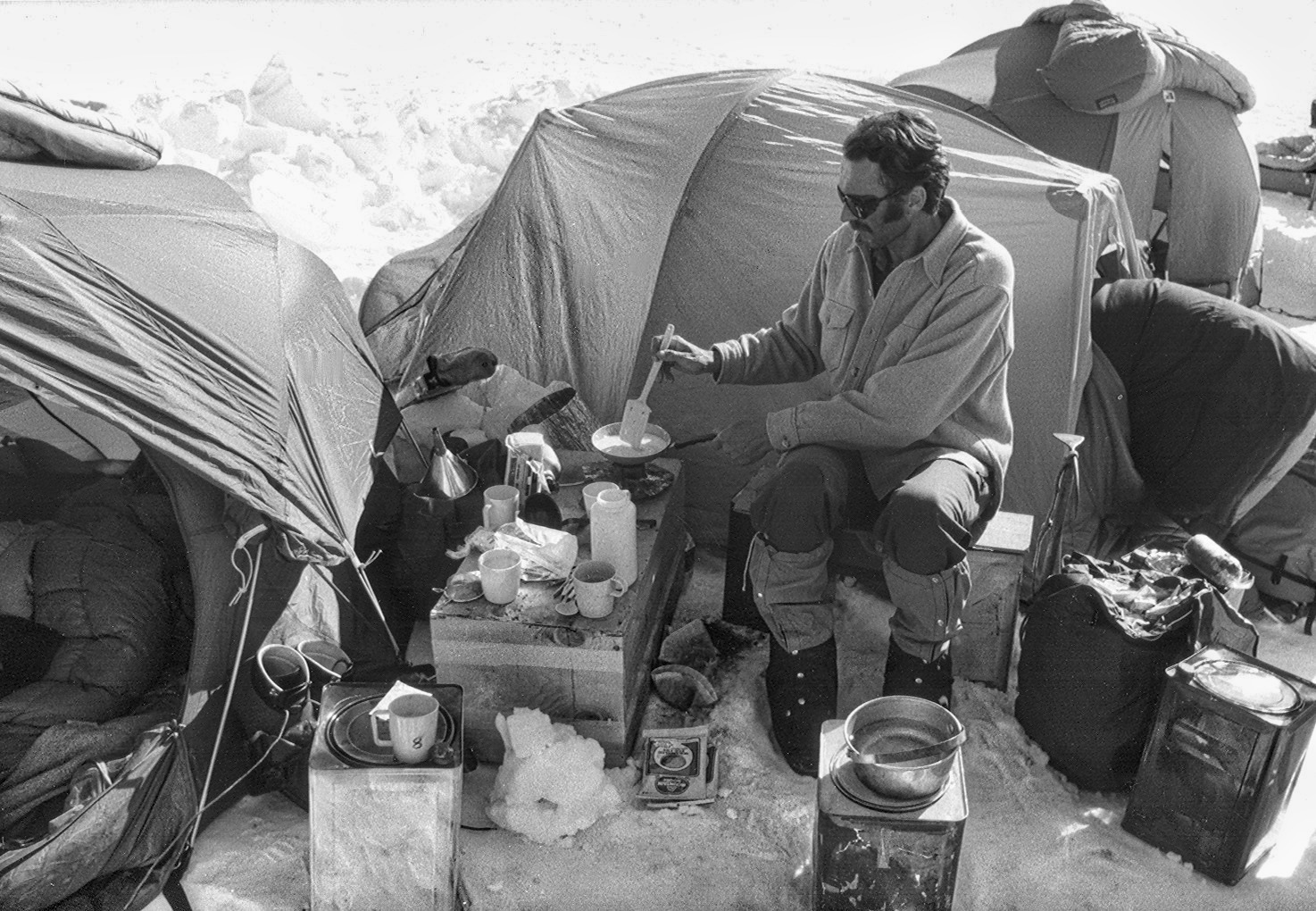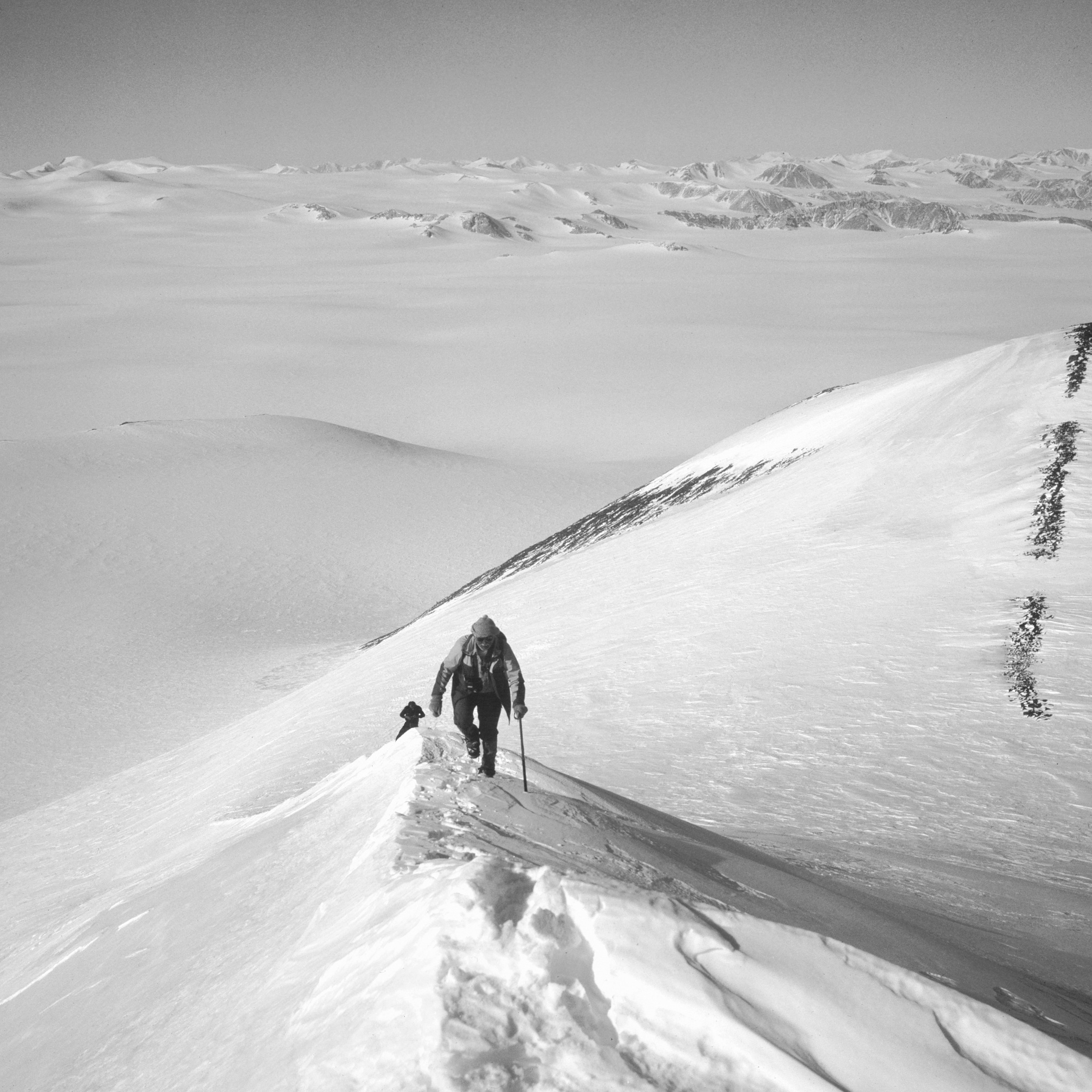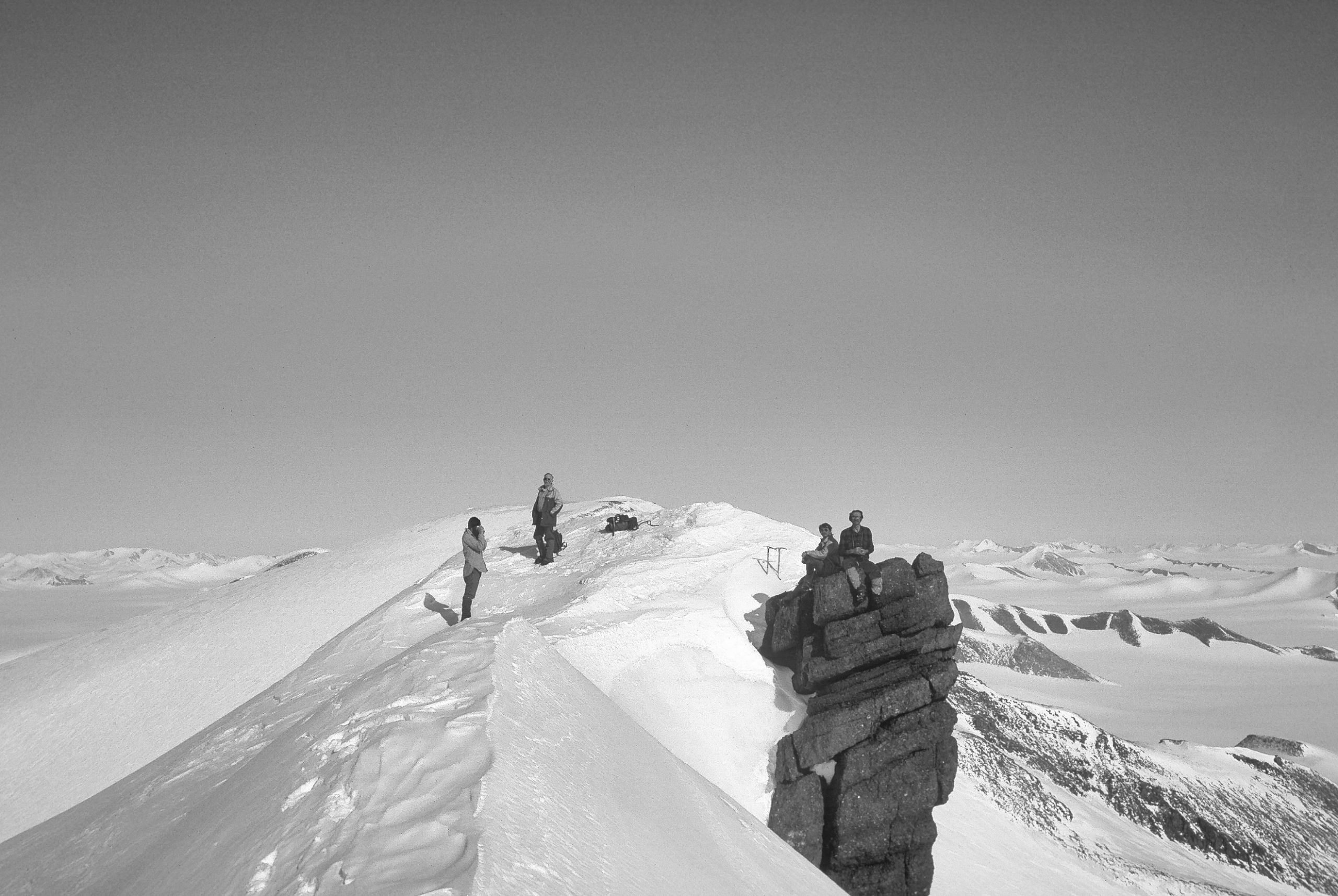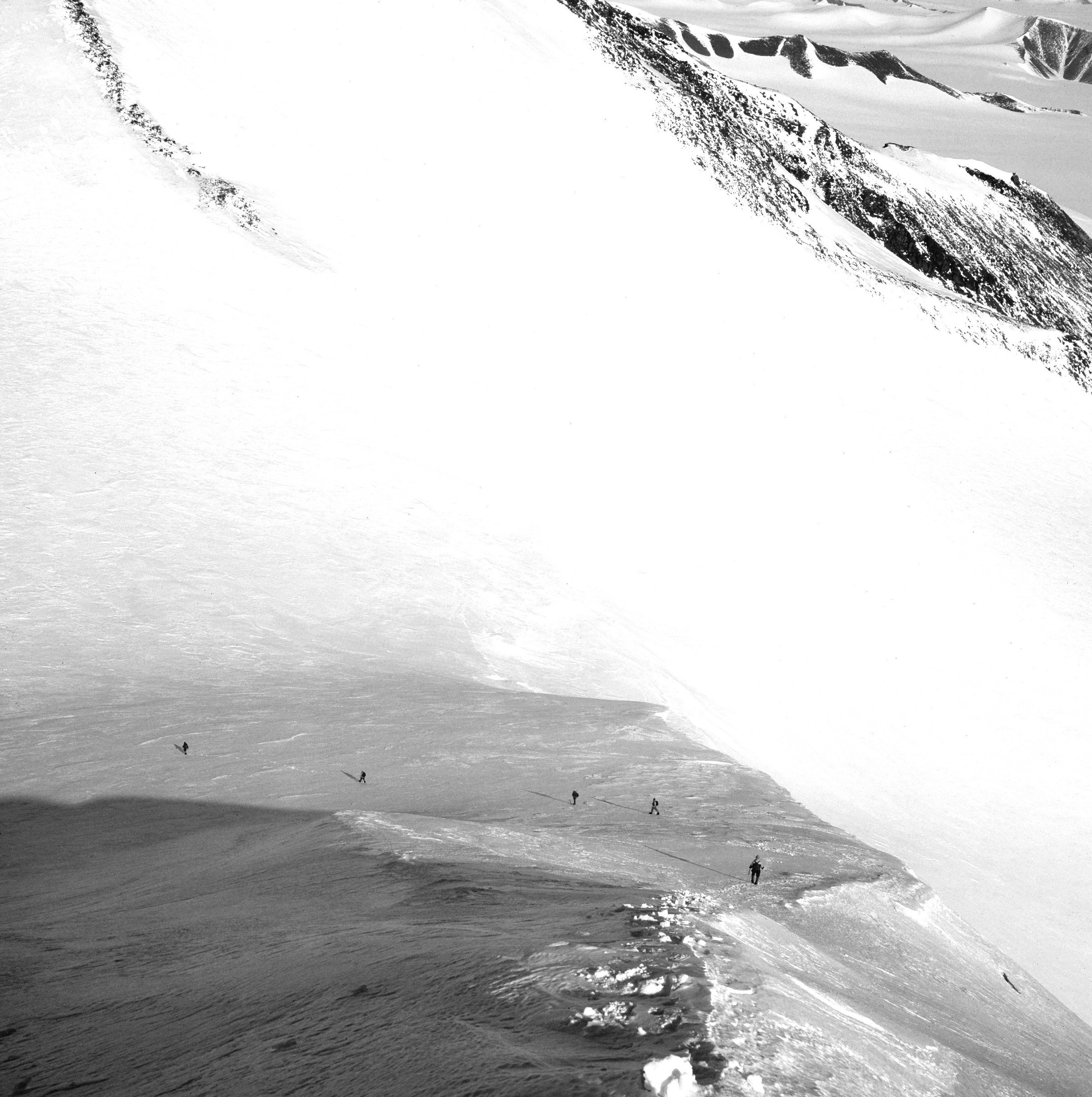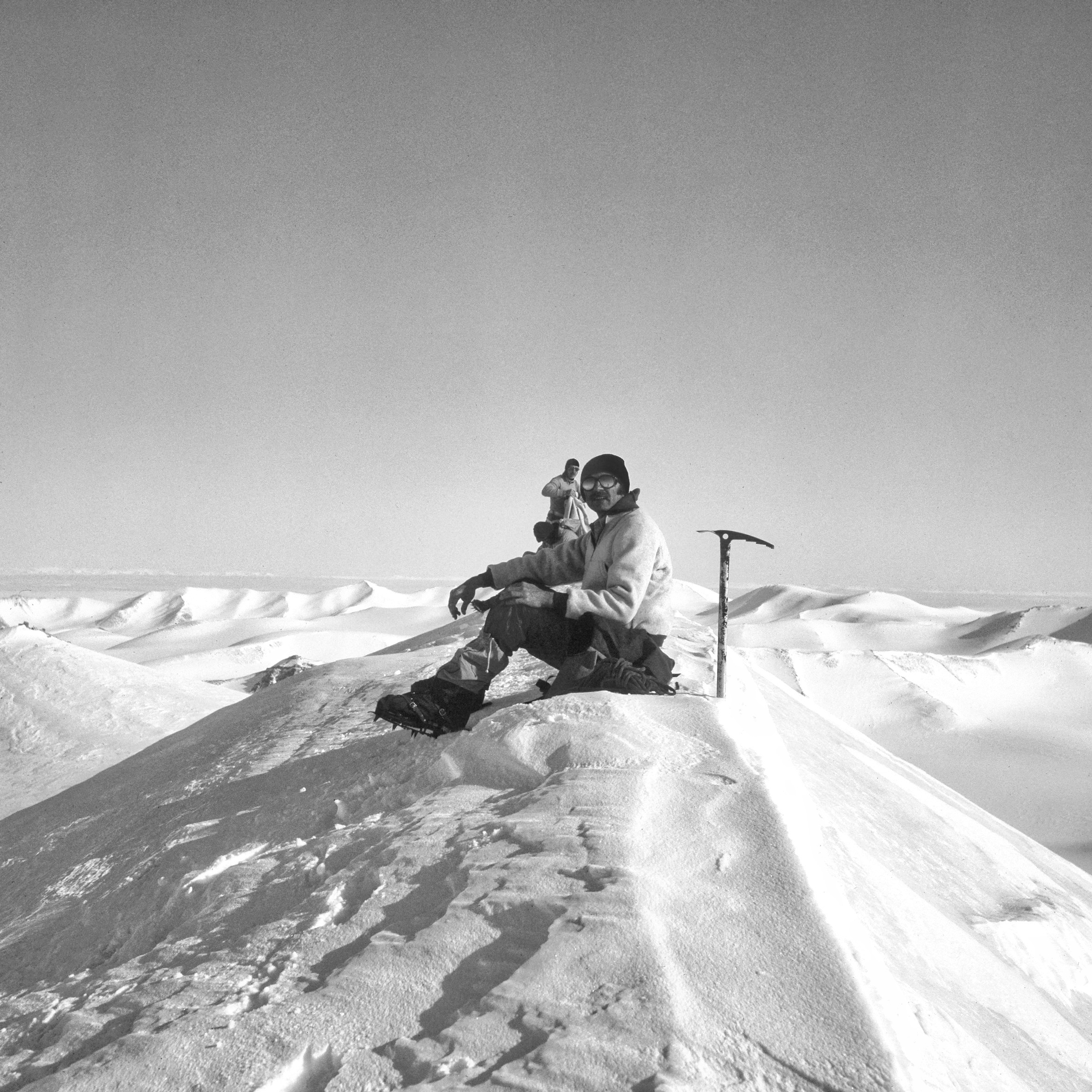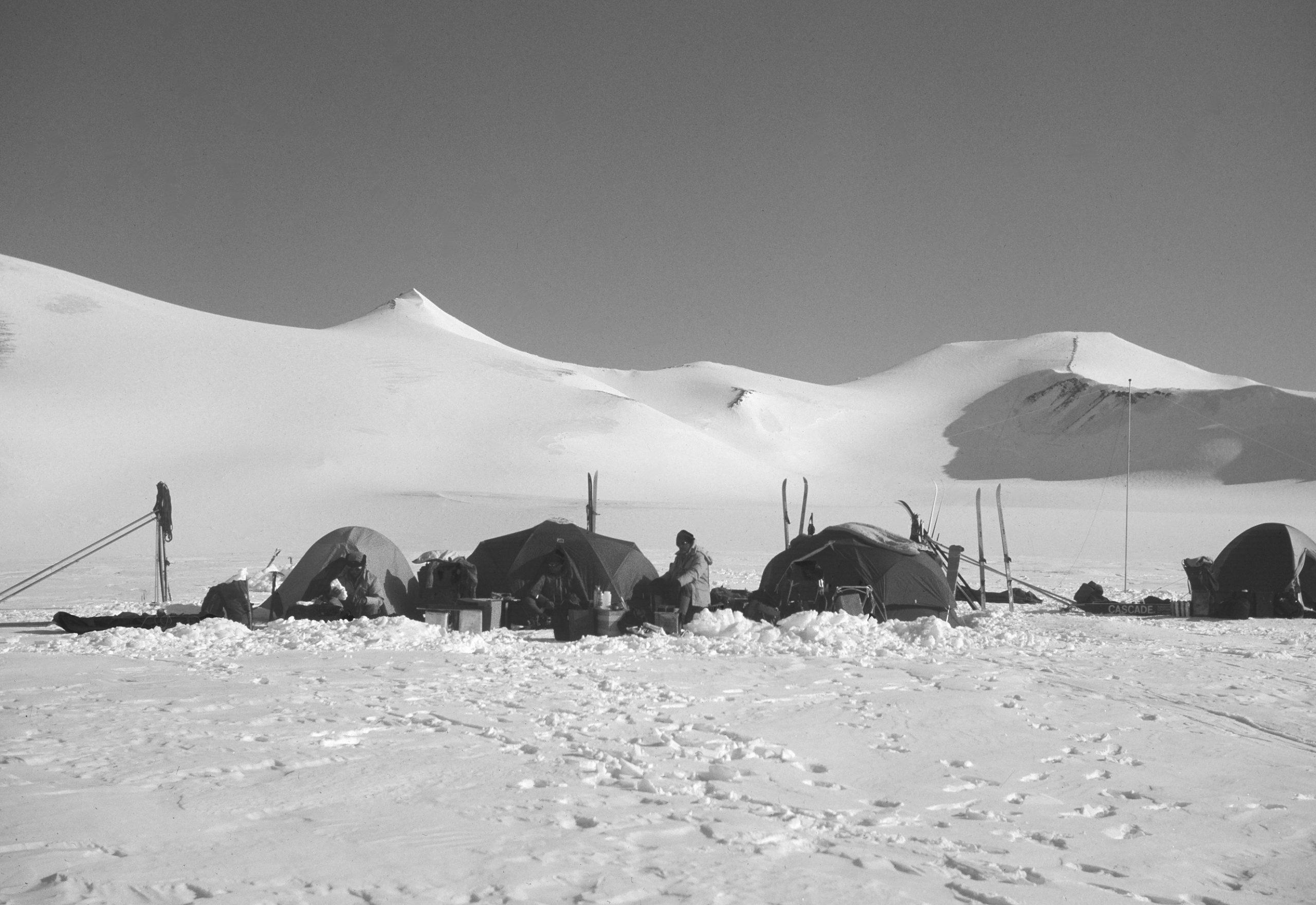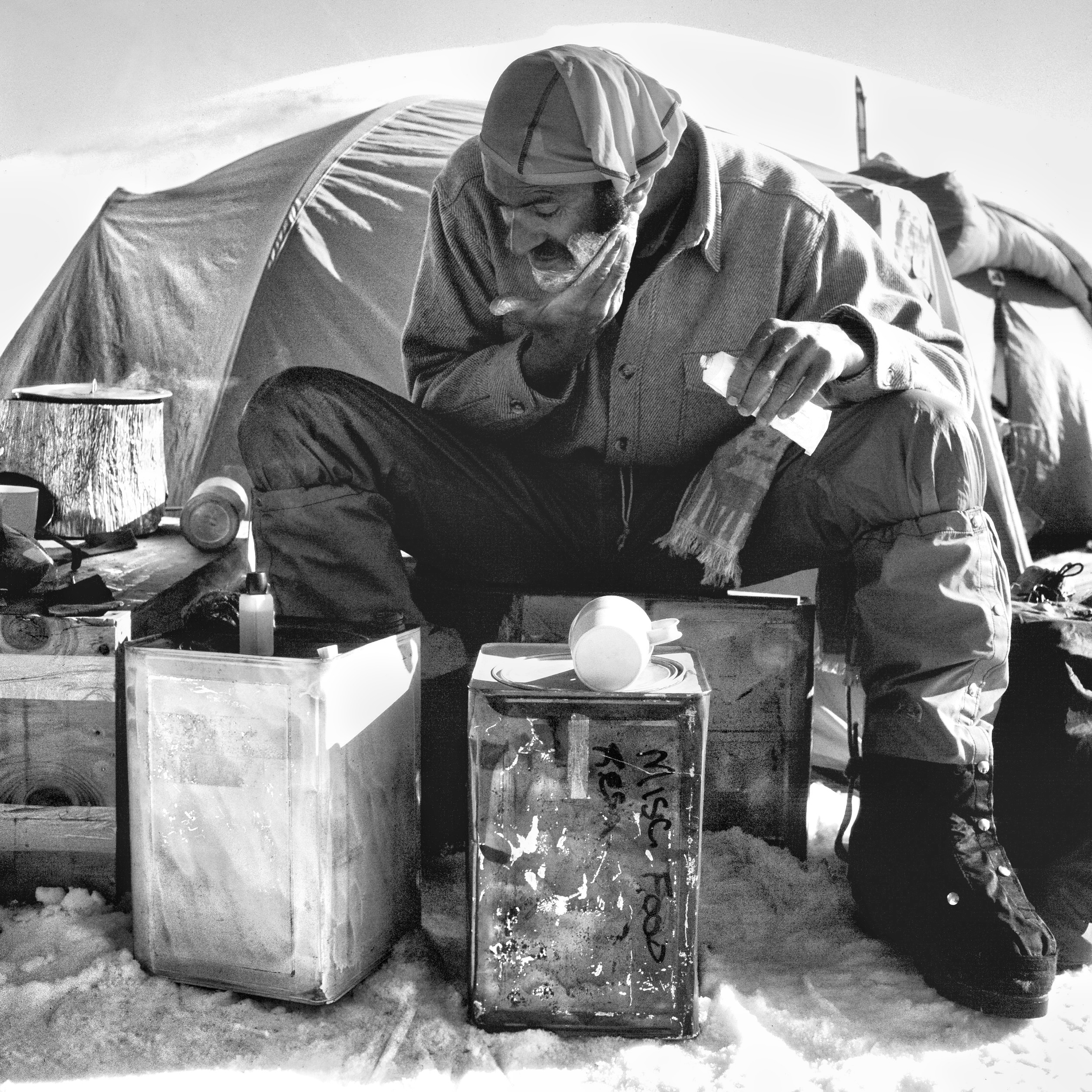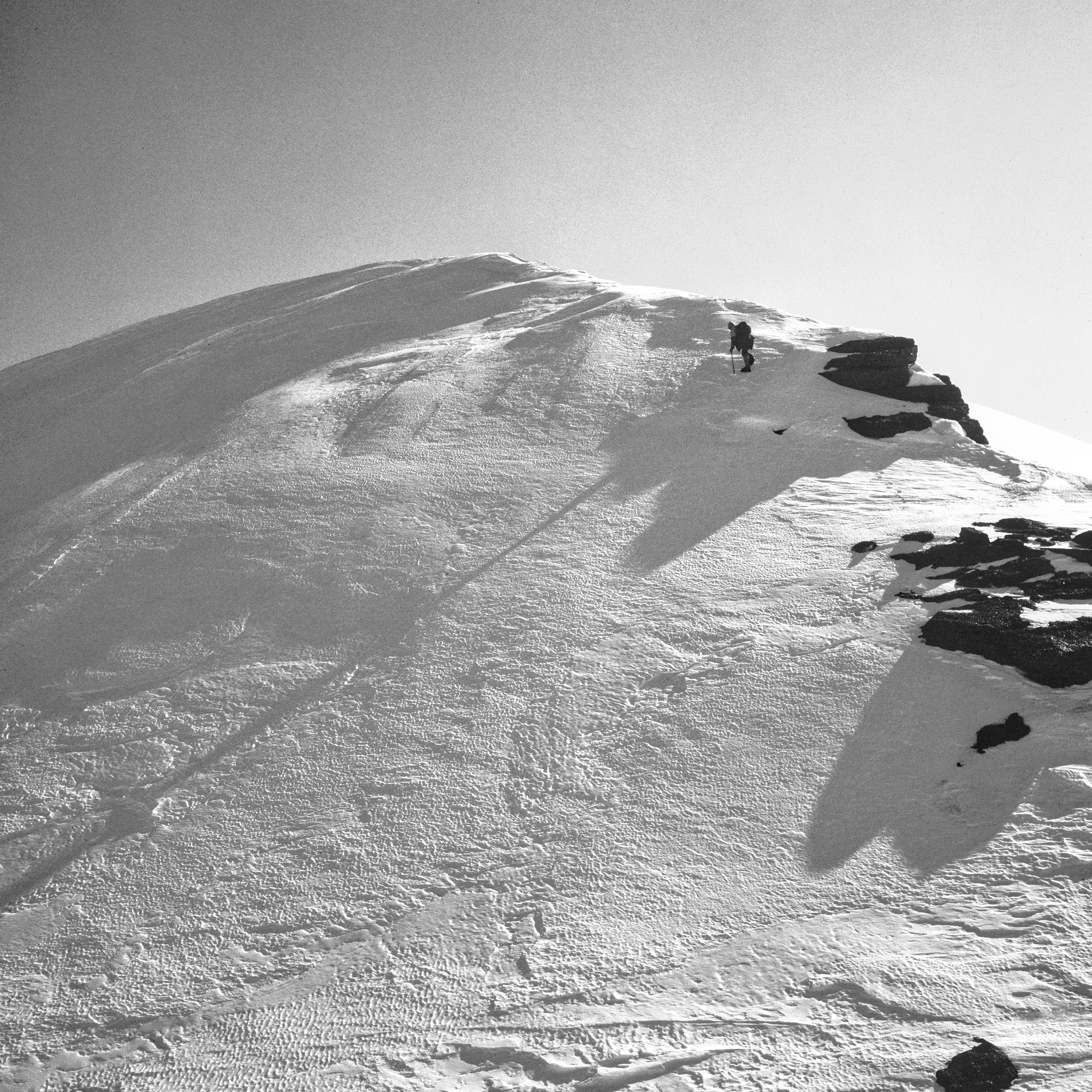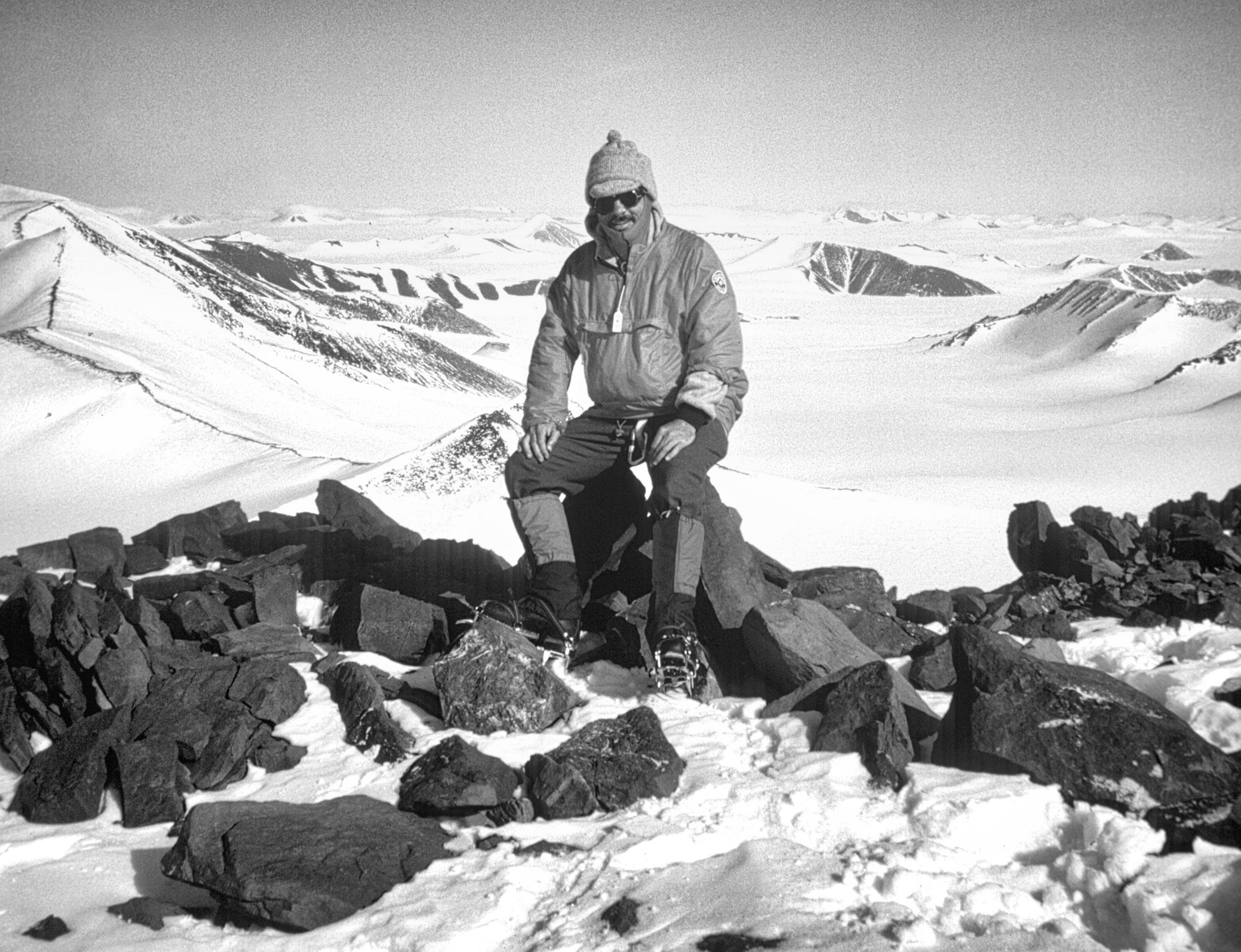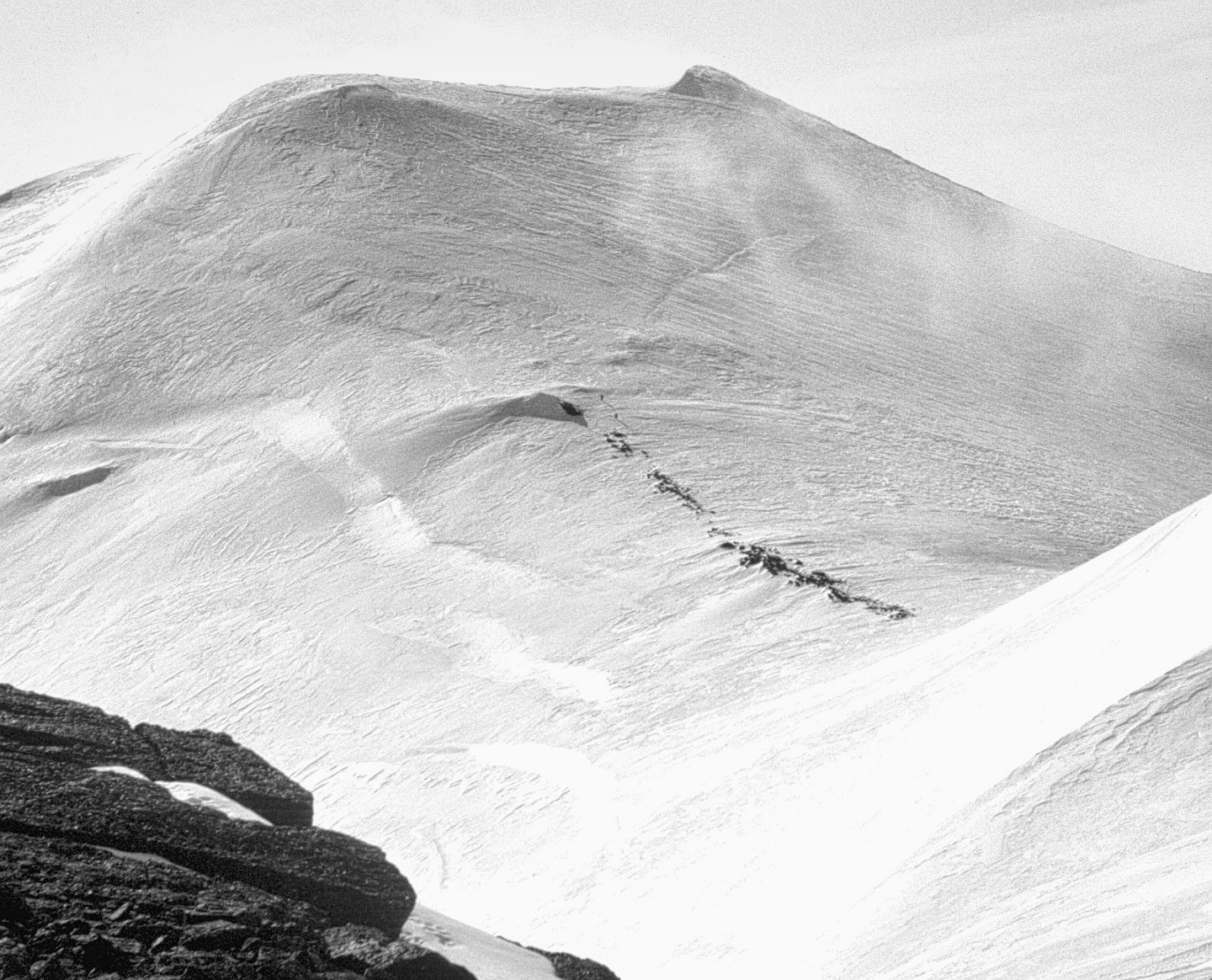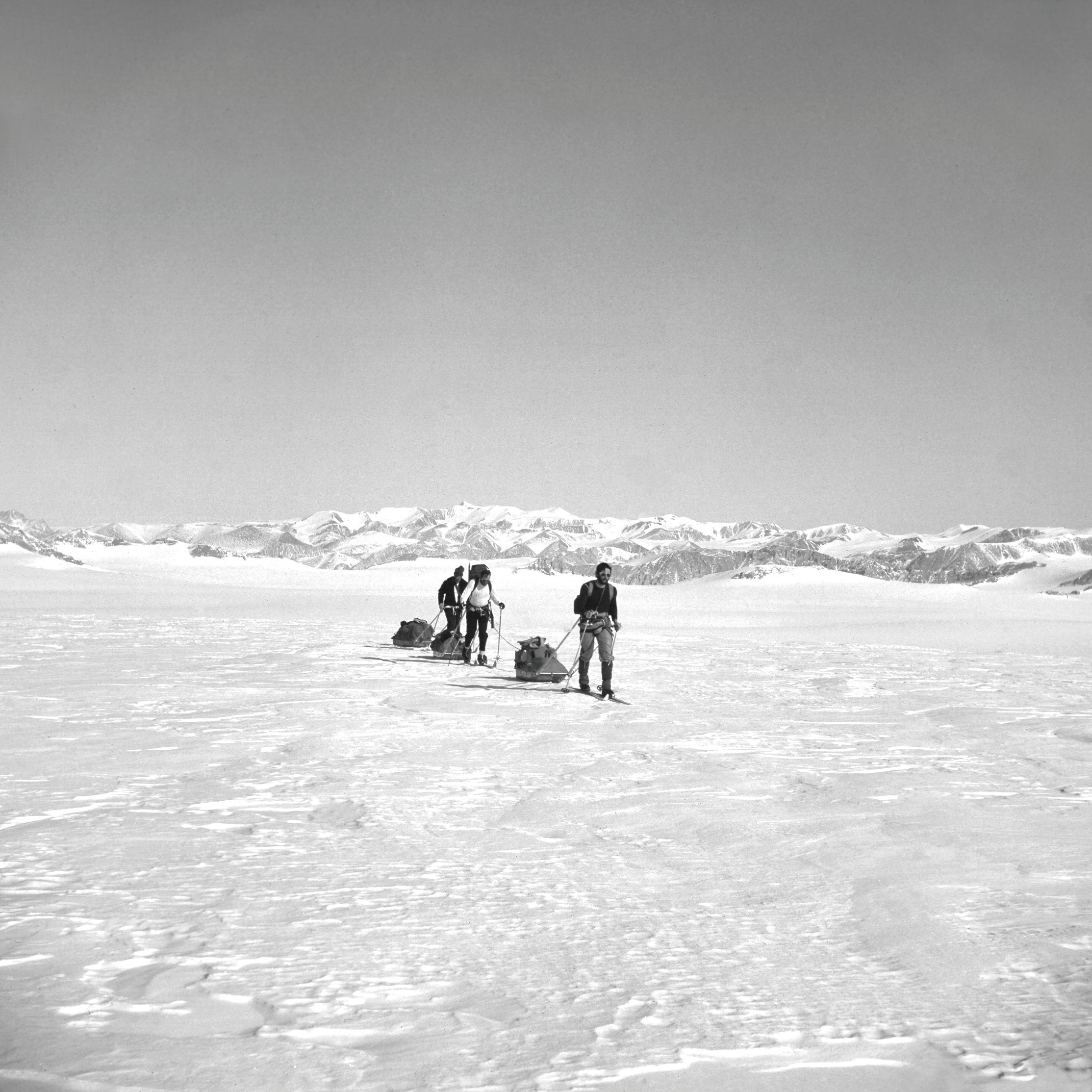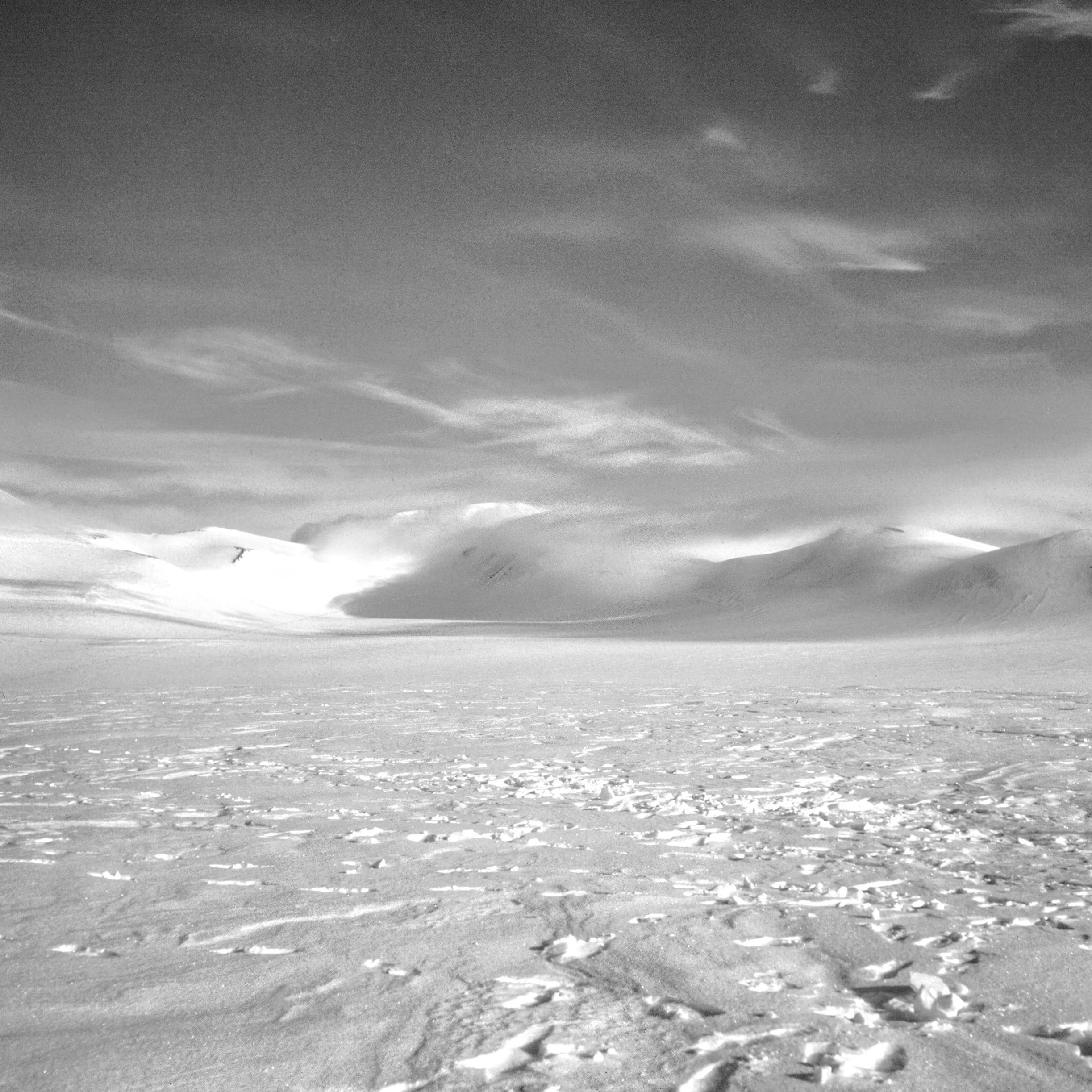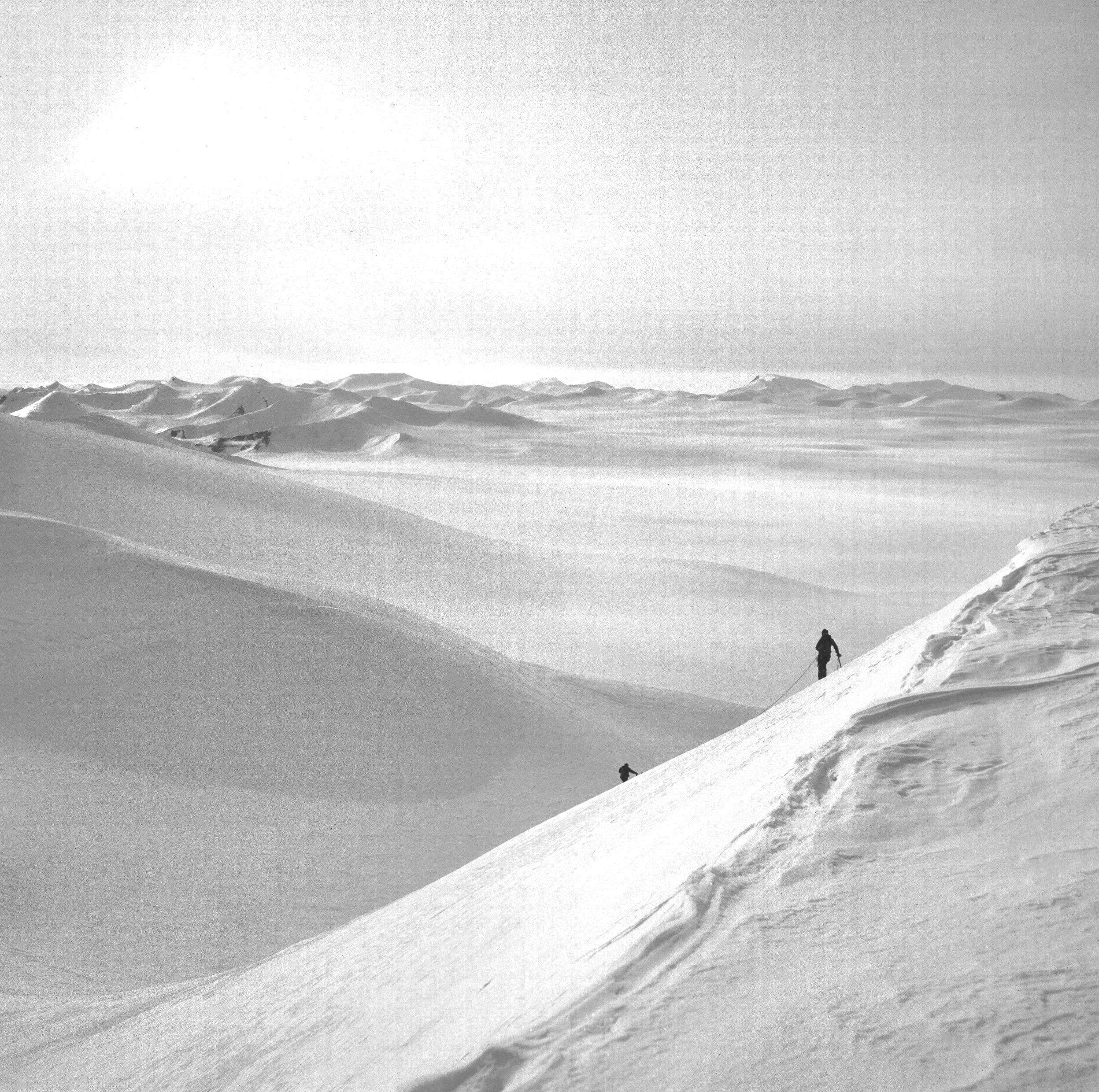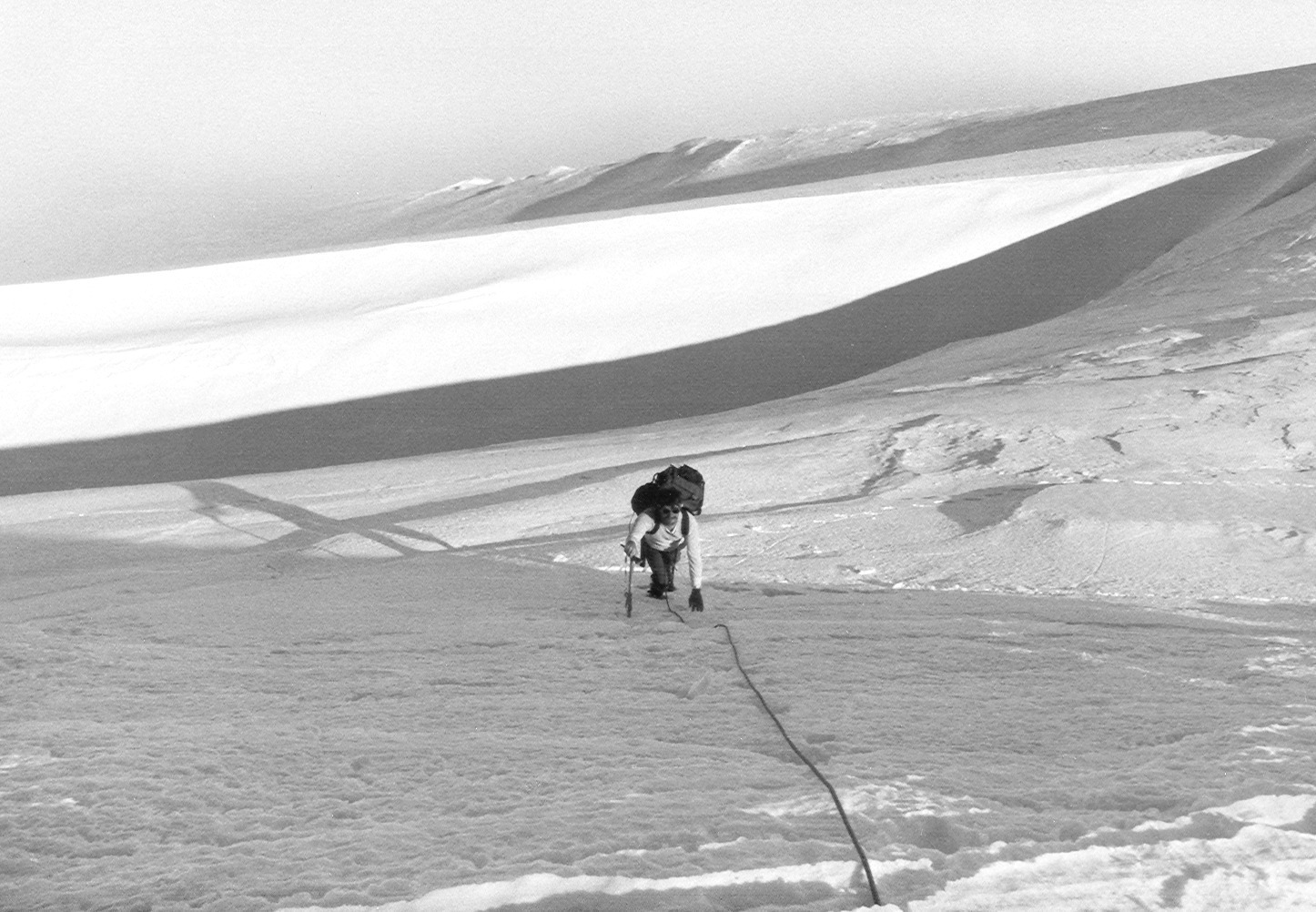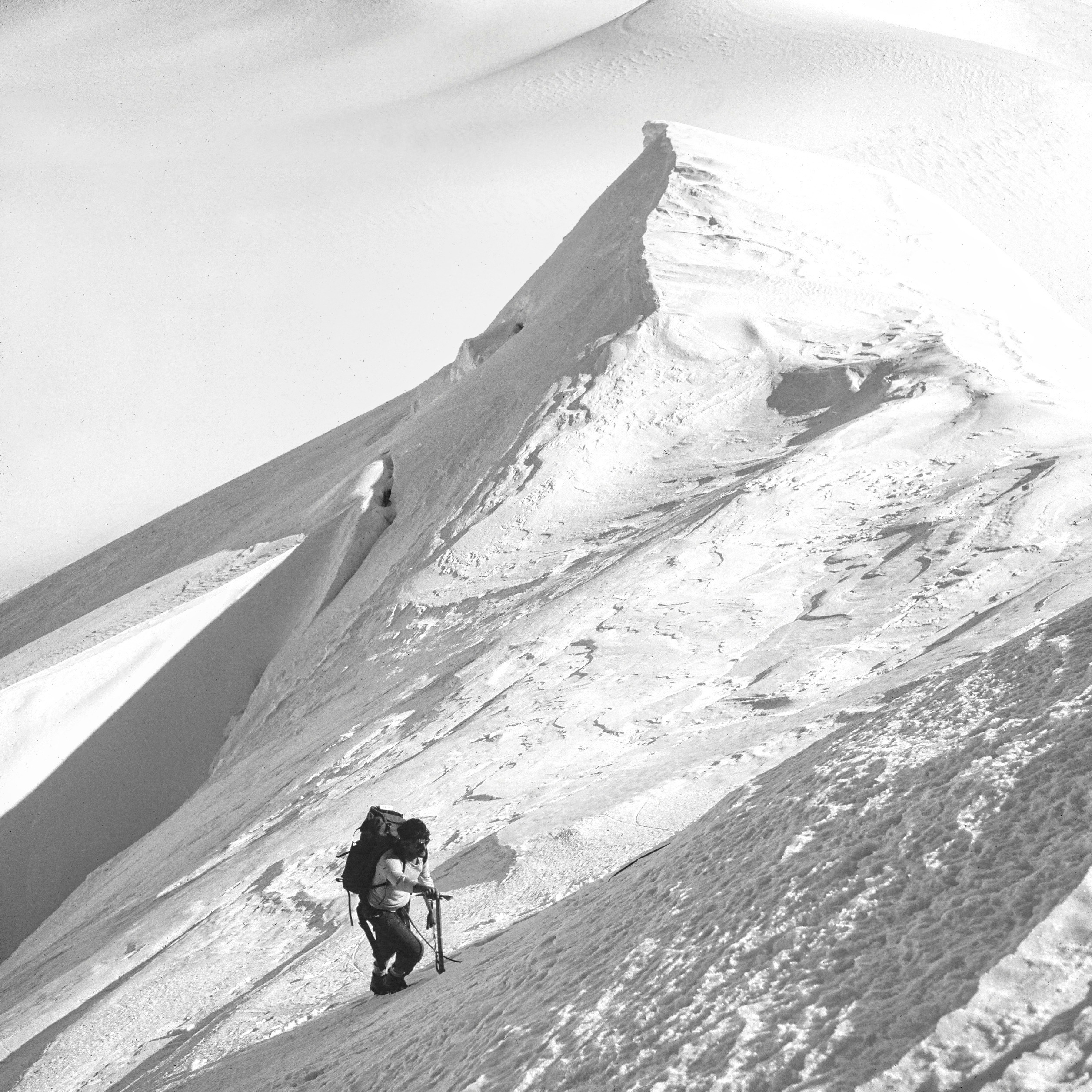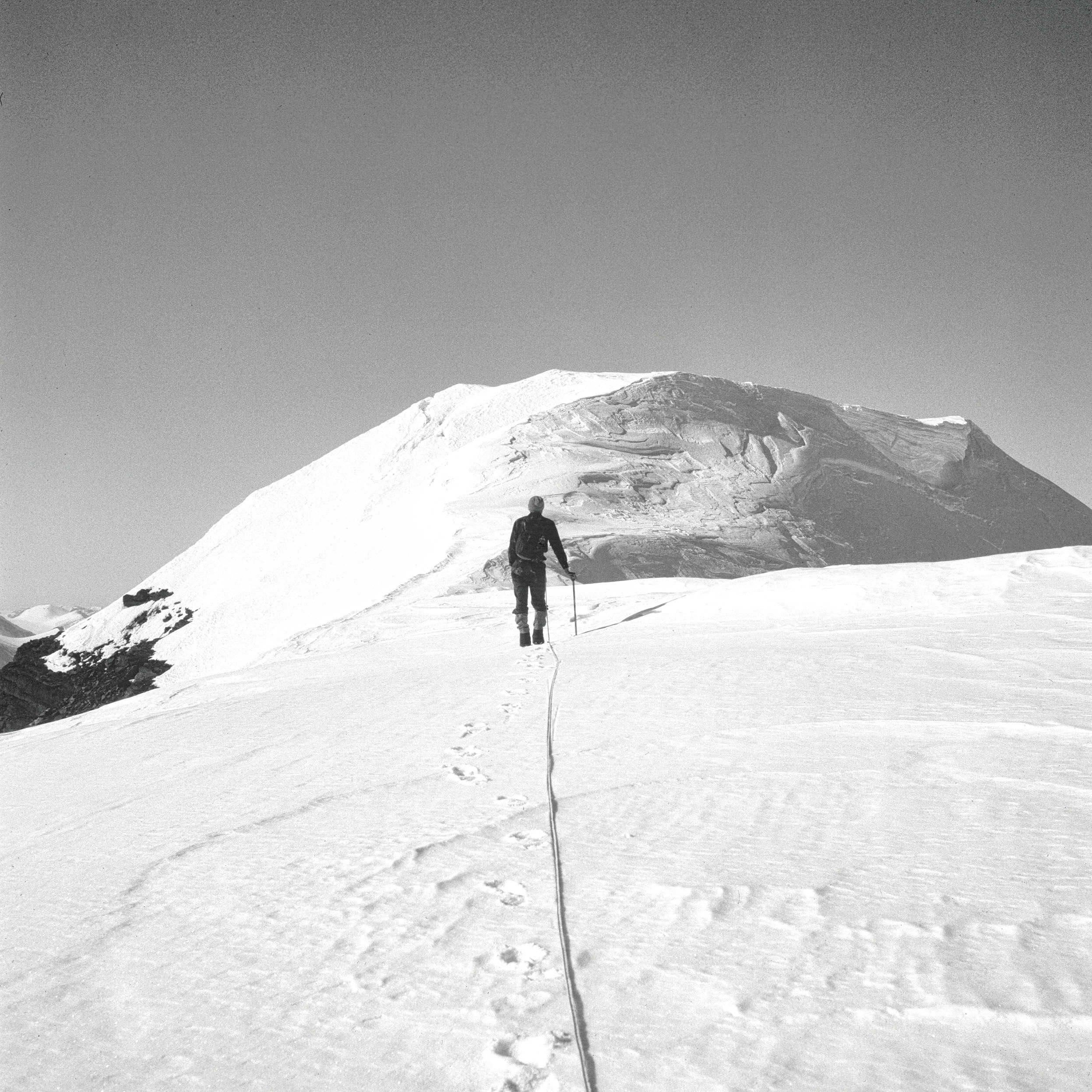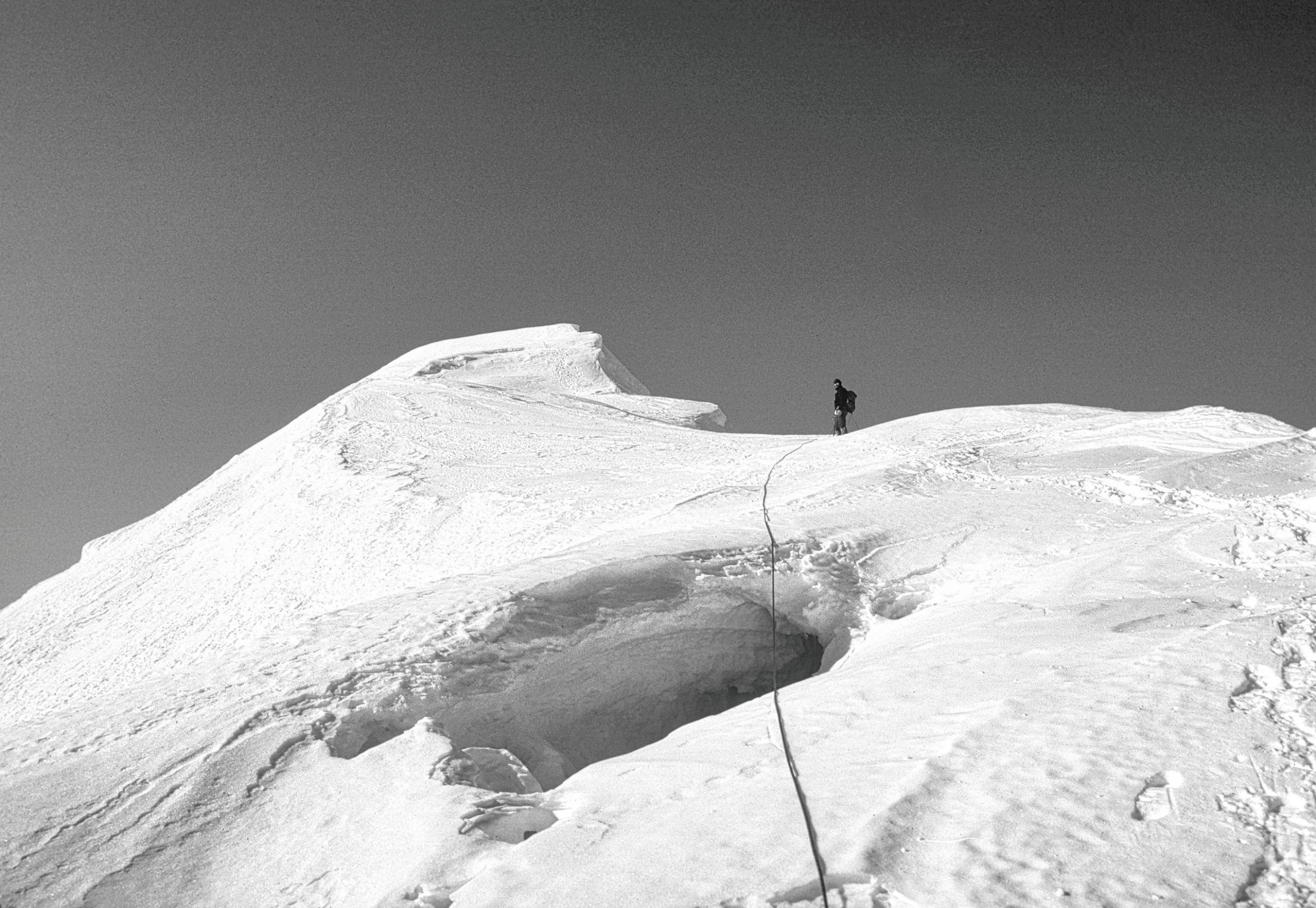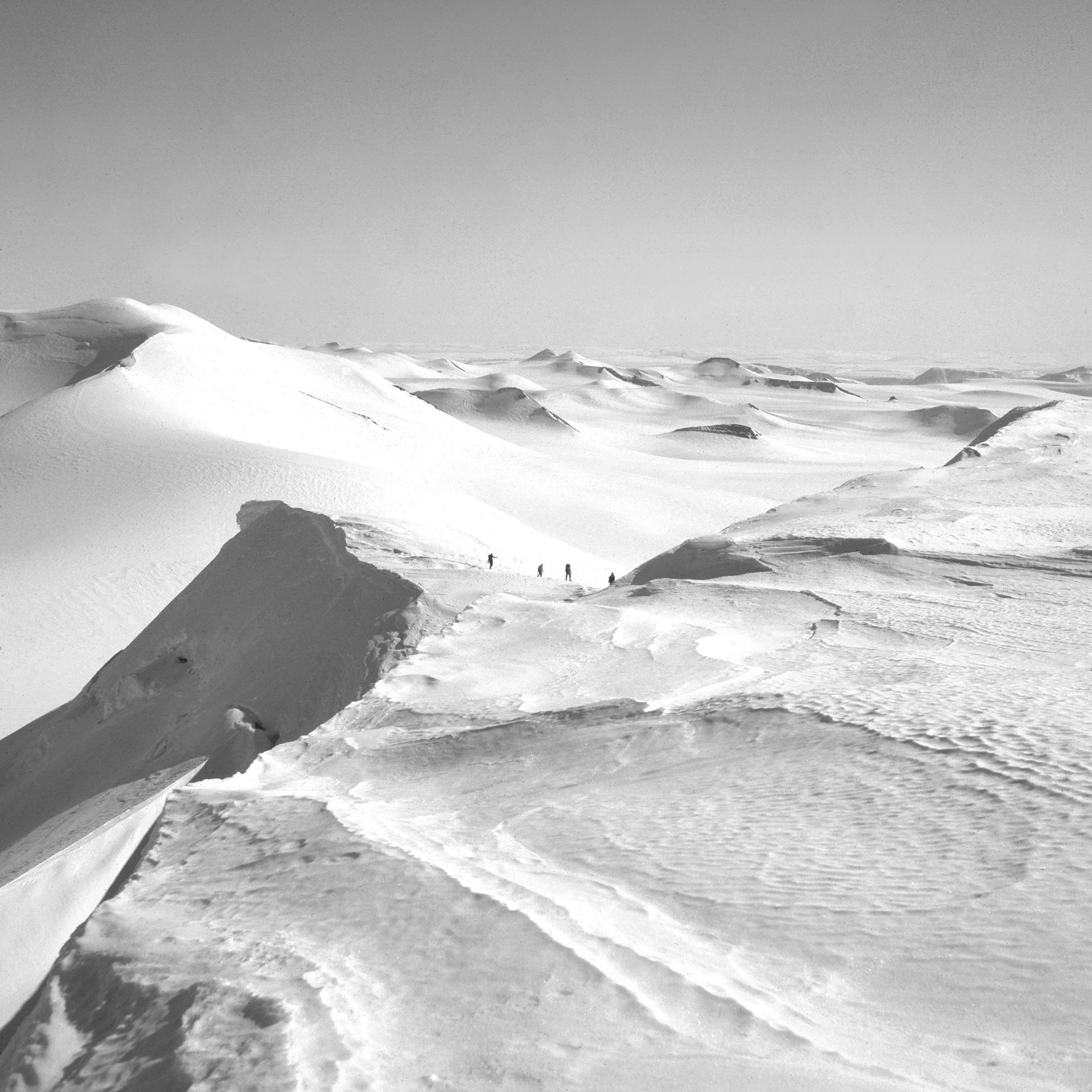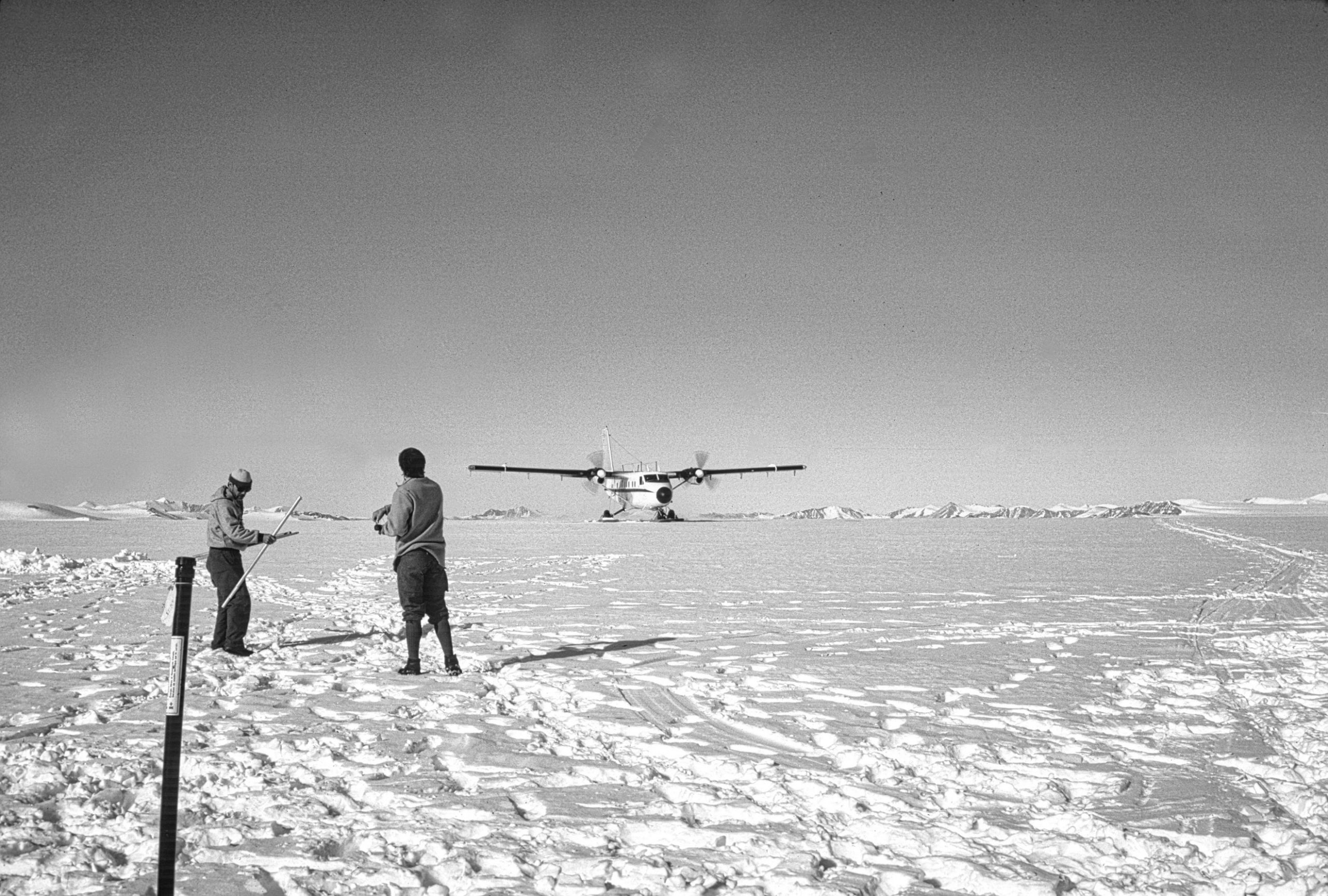.
.
ARCTIC EXPLORATIONS
IN THE YEARS 1978, 1980,
1981 and 1982
Volume 2
By
Stephen Trafton and Allan Errington
Map of the high Arctic showing the locations of the 1978, 1980, 1981 and 1982 American Expeditions
Table of Contents
Volume 2
1981 American Spitzbergen Expedition
1982 American Northern Ellesmere Island Expedition
1981 American Spitzbergen Expedition
Team: Steve Trafton, Al Errington,
John Mason, Frank Baird, Sam Gardner
In April, the 1981 American Spitzbergen Expedition made a ski traverse of Oscar II Land in a remote part of Spitzbergen in the Svalbard Archipelago of northern Norway. After flying via ski plane into Kongsvegpasset we established our Base Camp (78° 44’N), from which we explored and climbed to the summits of Vegvaktaren, Kongsfjella, Kongsvegsåta, and Farwoodtoppen. We then pulled sleds across the upper Hamarbreen, followed by a descent via Palassfonna to the north end of Palasset Peak at Kronepasset where we established a camp. The next day we climbed the middle peak of the Tre Kroner (the “Nora” summit) before being pinned down for two days by strong winds. Once the storm abated, we pulled our sleds across the Dronningpasset and descended the Kongsveggen Glacier to the Kongsfjorden. From there we continued down the frozen fjord to the weather station at Ny-Ålesund. We spent twelve days traversing Oscar II Land and were the first American team to do so. The team returned to Oslo via the mailboat from Tromsø through the Lofoten Islands to Bodø, Norway.
Team members arriving at Stars and Stripes Camp. Kongsvegpasset, Oscar II Land, Spitzbergen, 1981
Stars and Stripes Camp. Kongsvegpasset, Oscar II Land, Spitzbergen, 1981
Climbing on Farwoodtoppen. Oscar II Land, Spitzbergen, 1981
Climbing on the summit ridge of Farwoodtoppen, Oscar II Land, Spitzbergen, 1981
Self Portrait. Oscar II Land, Spitzbergen, 1981
At the edge. Oscar II Land, Spitzbergen, 1981
Mountains in the mist. Oscar II Land, Spitzbergen, 1981
The Tre Kroner (from left “Dana”, “Nora”, and “Svea”) from the summit of Kongsfjella Peak.
Oscar II Land, Spitzbergen, 1981
Climbers in the distance approaching the summit of Kongsvegsåta. Oscar II Land, Spitzbergen, 1981
Traversing Oscar II Land, Spitzbergen, 1981
Pressing on in a storm. Spitzbergen, 1981
The team. Oscar II Land, Spitzbergen, 1981
Windblown snow on climbing gear at Kronepasset camp. Tre Kroner in the distance. Oscar II Land, Spitzbergen, 1981
Our team on the way to the “Nora” summit of Tre Kroner (on the right). Oscar II Land, Spitzbergen. 1981
Crossing the great white. Oscar II Land, Spitzbergen, 1981
Lunch on the ice of Kongsfjorden near the snout of the Kongsveggen Glacier. Oscar II Land, Spitzbergen, 1981
The mooring mast of the “Norge” at Ny-Ålesund. The Kongsfjorden and the Kongsveggen Glacier in the distance. Spitzbergen, 1981
Mountain scenery in the fjords of the Lofoten Islands, 68° N. Norway, 1981
1982 American Northern Ellesmere Island Expedition
Team: Steve Trafton, Al Errington,
Brad Albro, Rick Piercy, Paul Williams, John Petrie, Jim Shedd, Bill Robinson
In late May and early June, the 1982 American Northern Ellesmere Island Expedition climbed and toured in the British Empire Range of northern Ellesmere Island. We flew from Resolute Bay on Cornwallis Island to our first camp at 82° N. near Mount Whistler. From that camp and four consecutive camps, we climbed a total of 16 peaks. Our ascents included the third ascent of Mount Whistler and the second ascent of Barbeau Peak, which at 8583 feet is the highest mountain in North America east of the Mississippi River. The remaining climbs were all first ascents. We named our first ascent peaks after ships which were sent out by the Royal Navy, in the mid-1800s, in search of the lost expedition under the command of Sir John Franklin. From Camp 1 we climbed Enterprise Peak, Mount Whistler, Felix Peak, Investigator Peak, and North Star Peak. From Camp 2: Hecla Peak, Fury Peak, Griper Peak, and Victory Peak. From Camp 3; Barbeau Peak and Resolute Peak. From Camp 4; Lady Franklin Peak, Pioneer Peak, Intrepid Peak, and Rescue Peak. From Camp 5, at the head of the Air Force Glacier; Blossom Peak. On June 9th our team was picked up by a ski-equipped Twin Otter and flown back to Resolute Bay.
Unloading the Twin Otter at Camp 1. 82° N. British Empire Range, Ellesmere Island, 1982
A cold midnight first ascent of Enterprise Peak. -30° wind chill. British Empire Range, Ellesmere Island, 1982
Breakfast is served at 82°N. British Empire Range, Ellesmere Island, 1982
On the summit ridge of Hecla Peak. British Empire Range, Ellesmere Island, 1982
Taking in the view after the first ascent of Hecla Peak. British Empire Range, Ellesmere Island, 1982
Down, down, down to the col between Fury and Hecla Peaks. British Empire Range, Ellesmere Island, 1982
Surveying the view from the summit of Fury Peak. British Empire Range, Ellesmere Island, 1982
Camp 3, Barbeau Peak on the left, Resolute Peak on the right. British Empire Range, Ellesmere Island, 1982
Al’s shaving day. British Empire Range, Ellesmere Island, 1982
Second ascent of Mount Barbeau. 82°N. British Empire Range, Ellesmere Island, 1982
Jim Shedd on the summit of Barbeau Peak (8583 feet). British Empire Range, Ellesmere Island, 1982
Climbers in the distance on the first ascent of Resolute Peak. British Empire Range, Ellesmere Island, 1982
Moving camp. British Empire Range, Ellesmere Island, 1982
Afternoon clouds gathering. British Empire Range, Ellesmere Island, 1982
View from high in the British Empire Range. Ellesmere Island, 1982
Perfect climbing conditions at 82° N. British Empire Range, Ellesmere Island, 1982
On steep snow at 82°N. British Empire Range, Ellesmere Island, 1982
Nearing the summit. British Empire Range, Ellesmere Island, 1982
A cold summit. Blossom Peak, British Empire Range, Ellesmere Island, 1982
The team heading back to camp after the first ascent of Blossom Peak. British Empire Range, Ellesmere Island, 1982
Twin Otter landing at Air Force Pass. Coming for to carry us home. British Empire Range, Ellesmere Island, 1982

